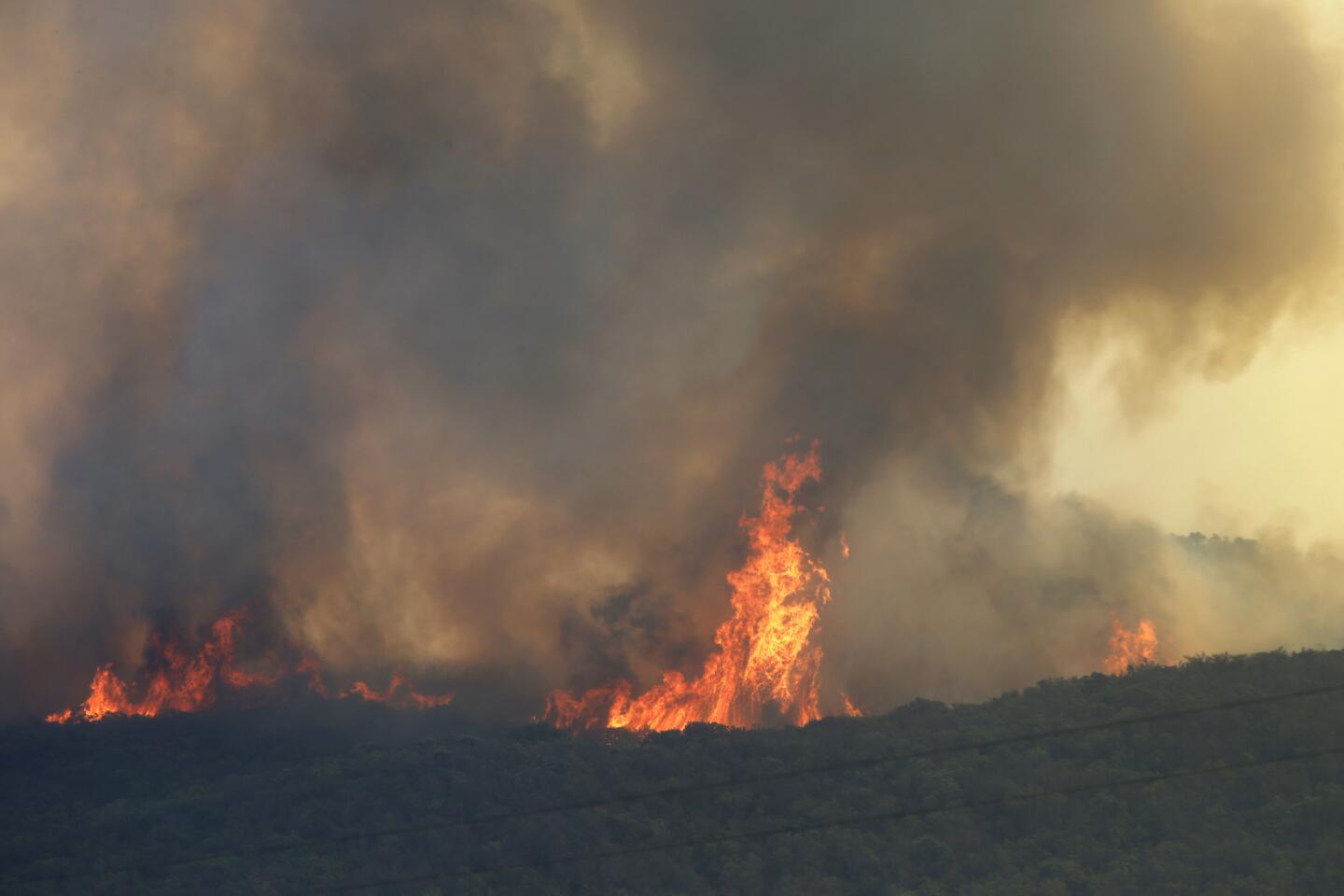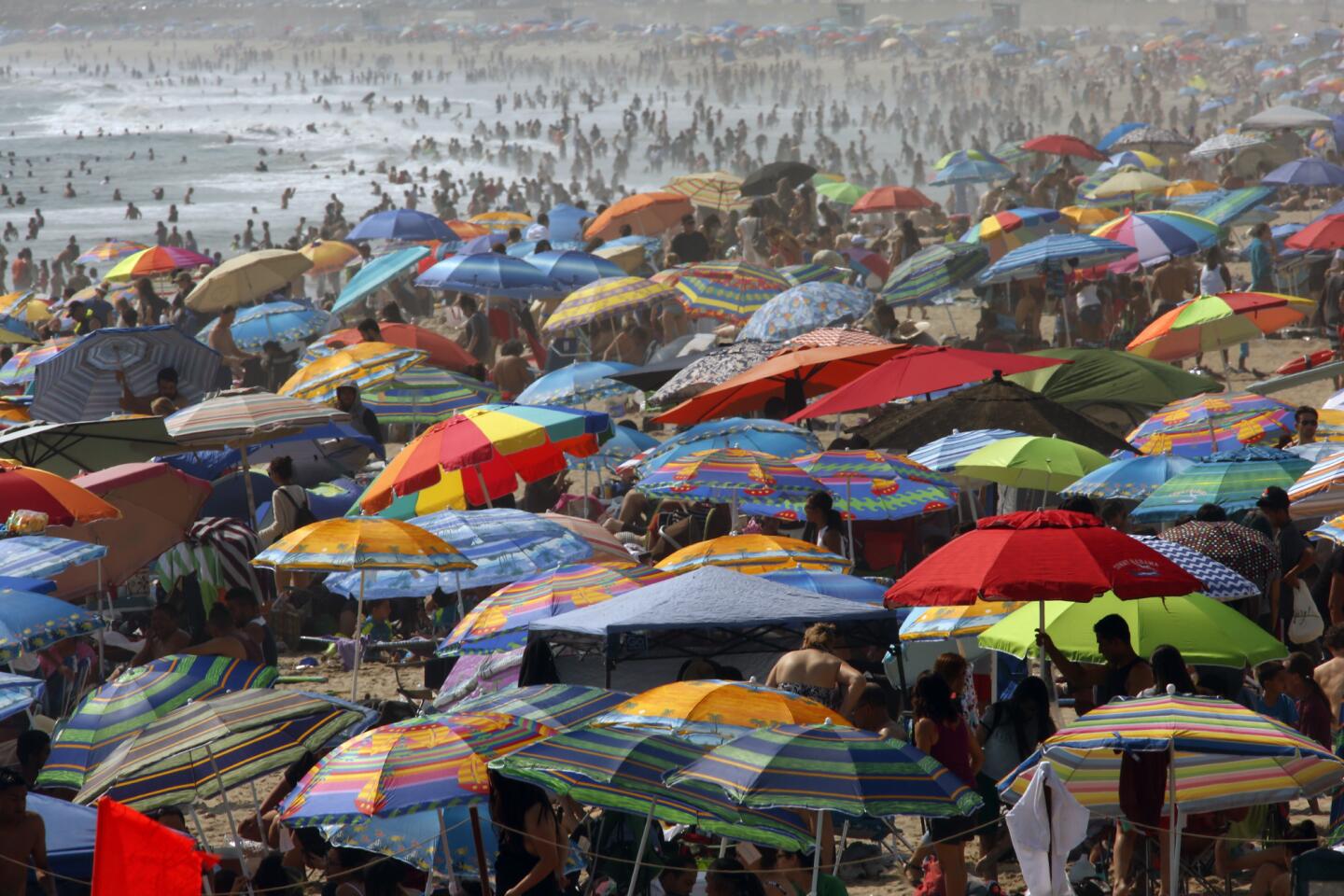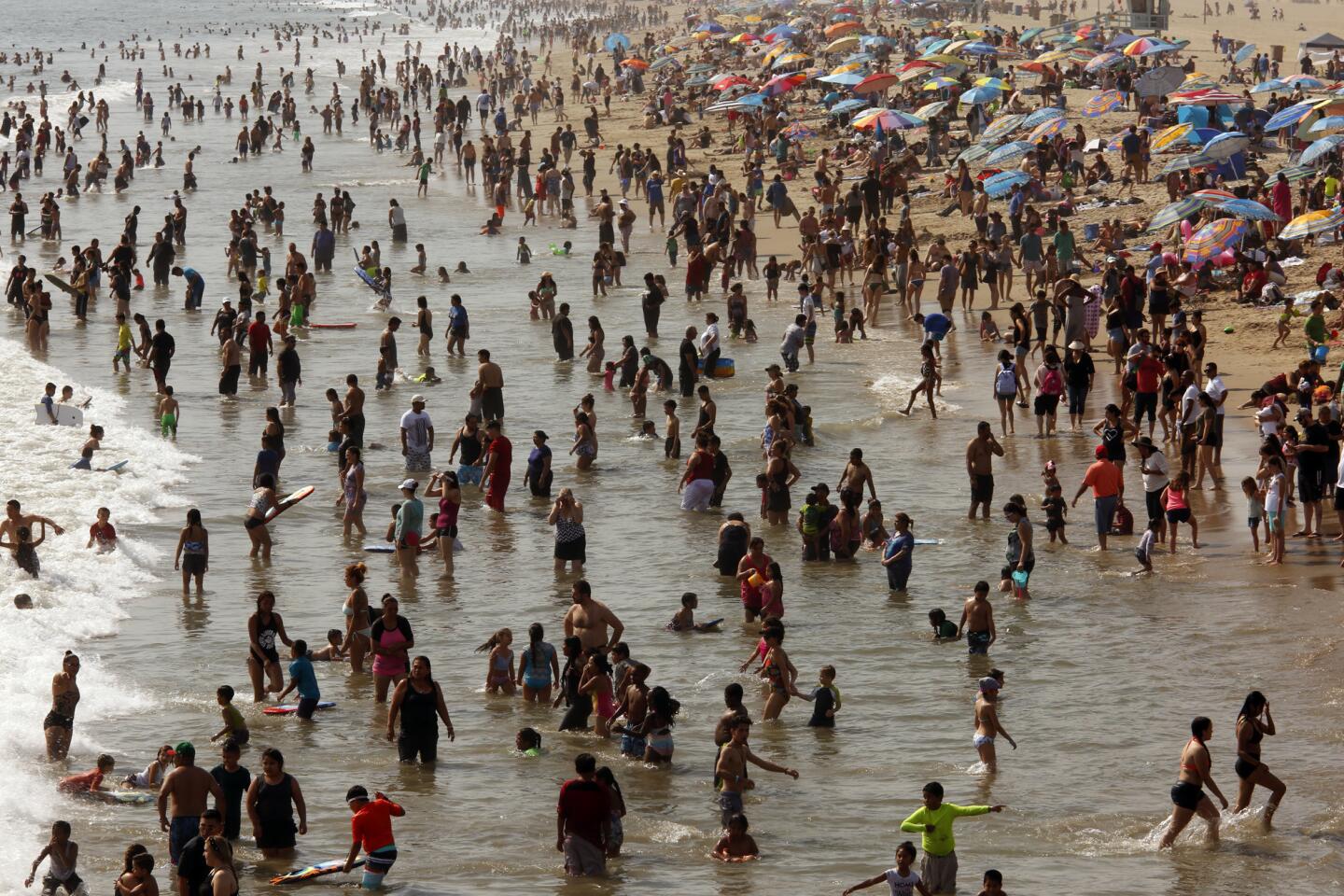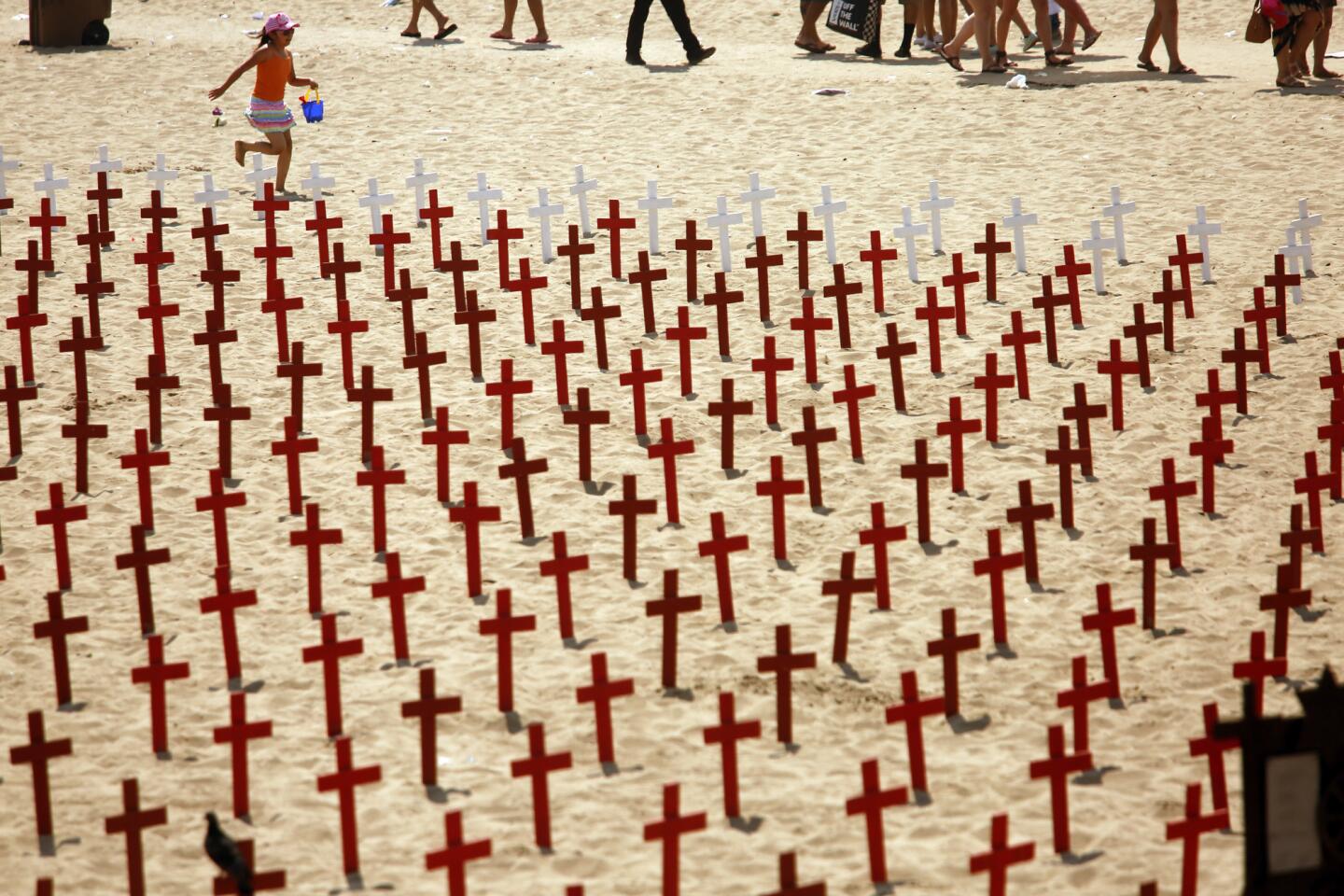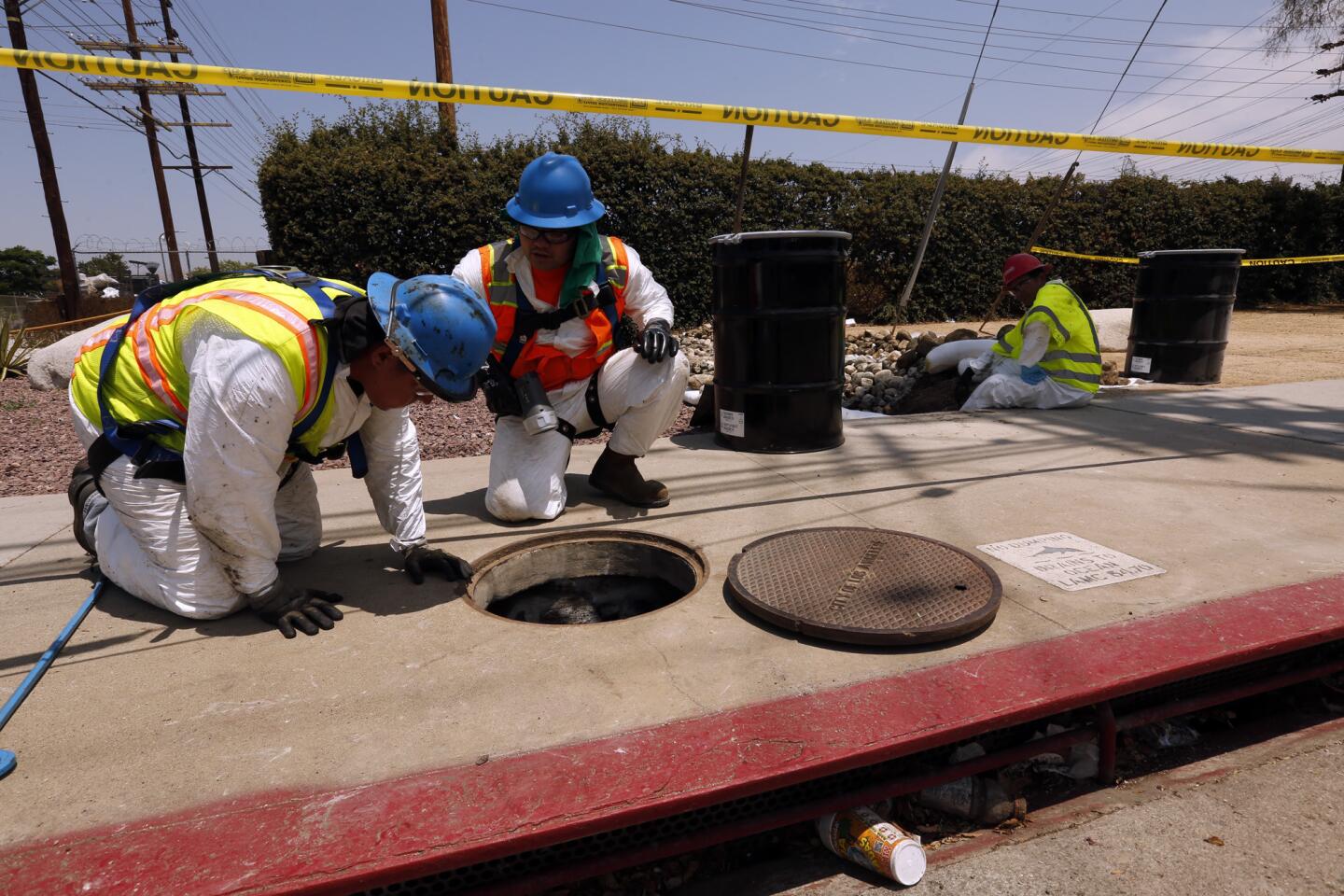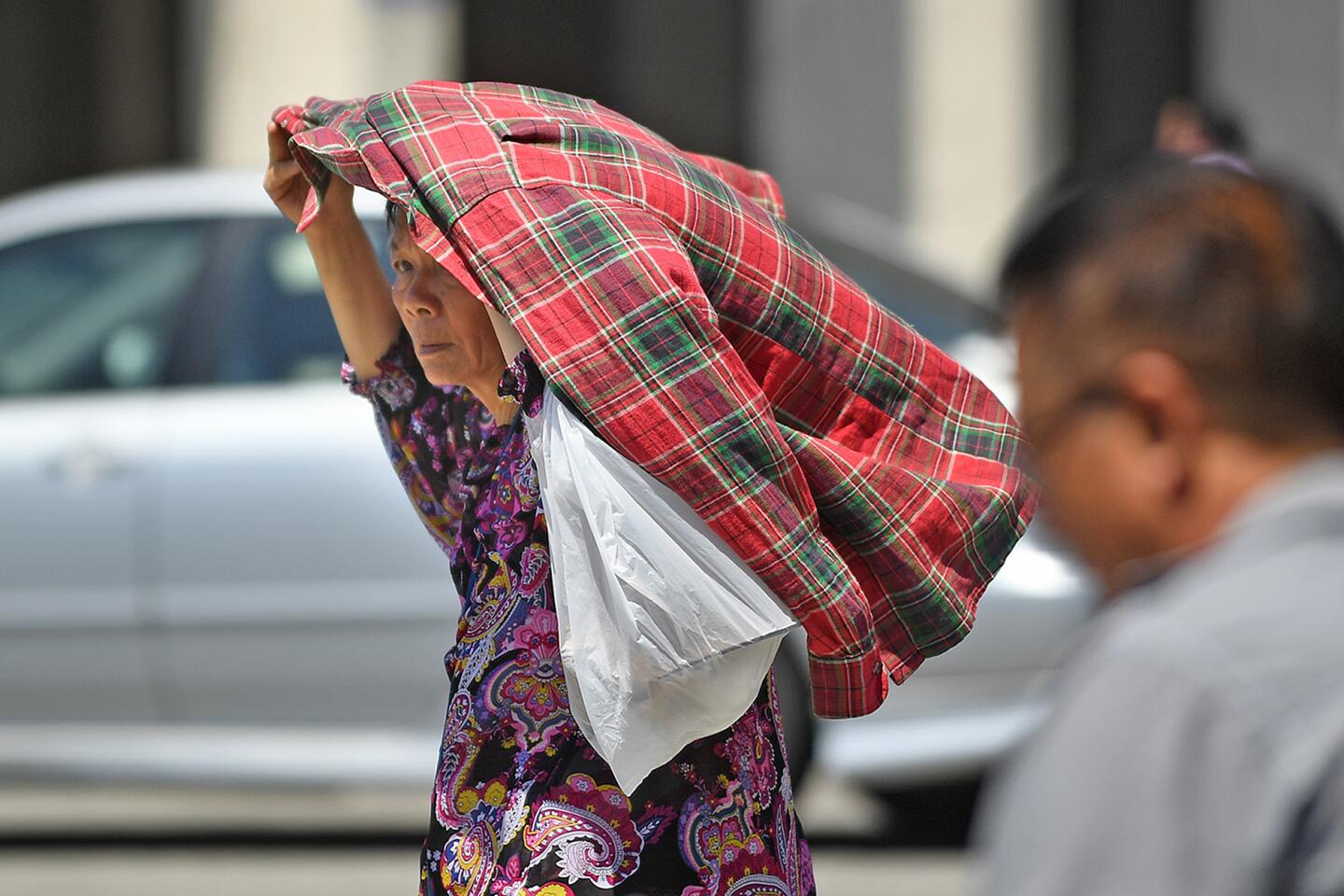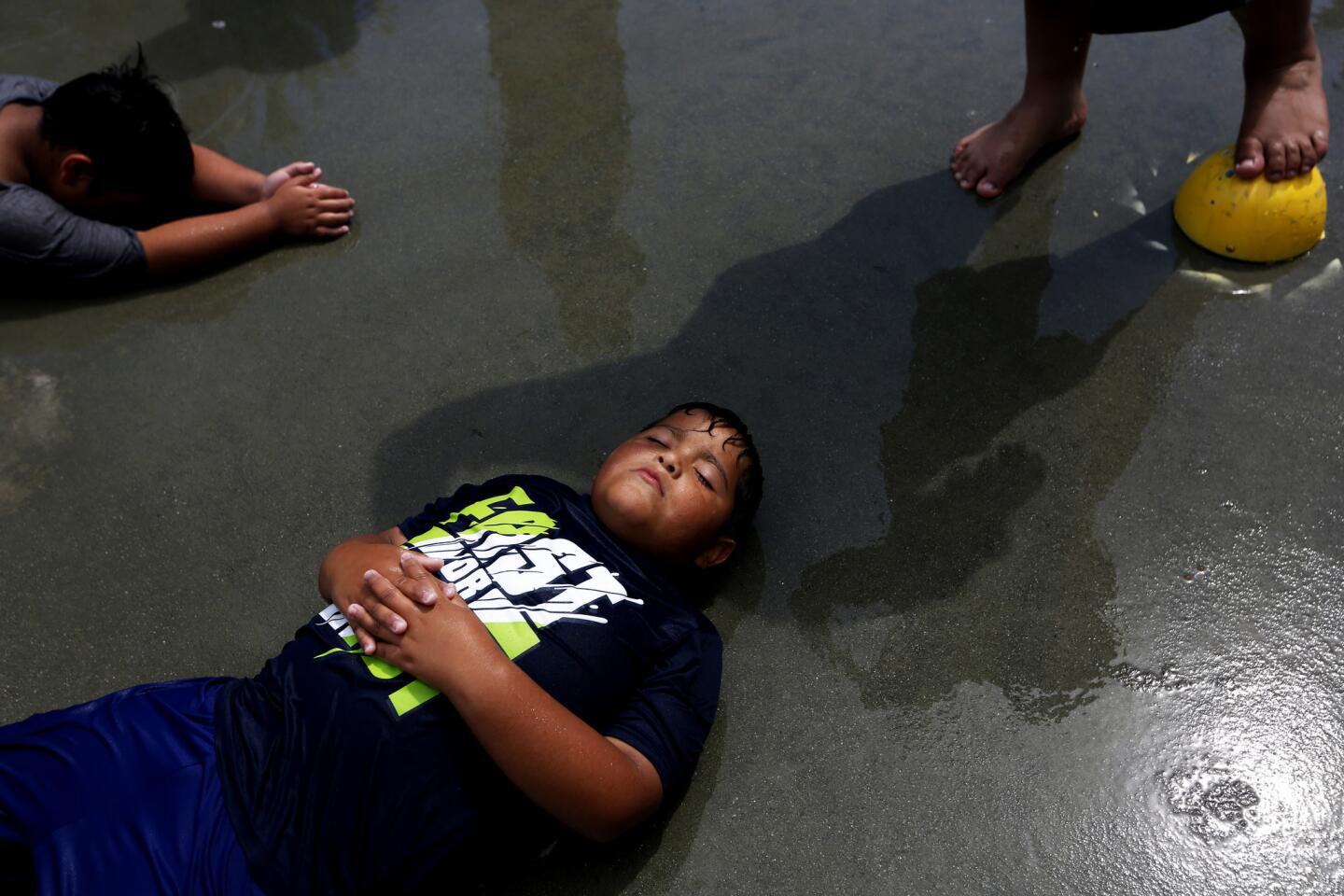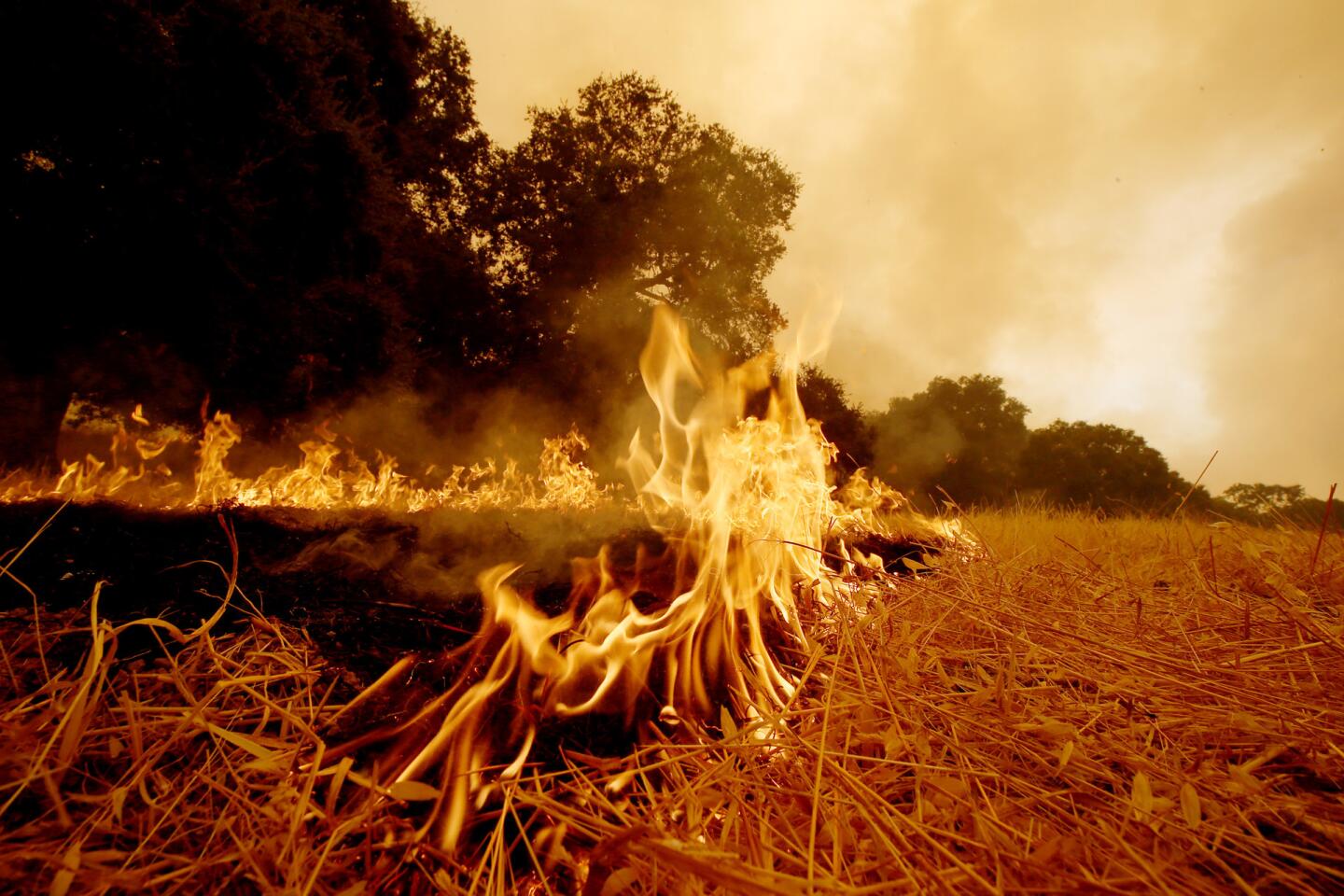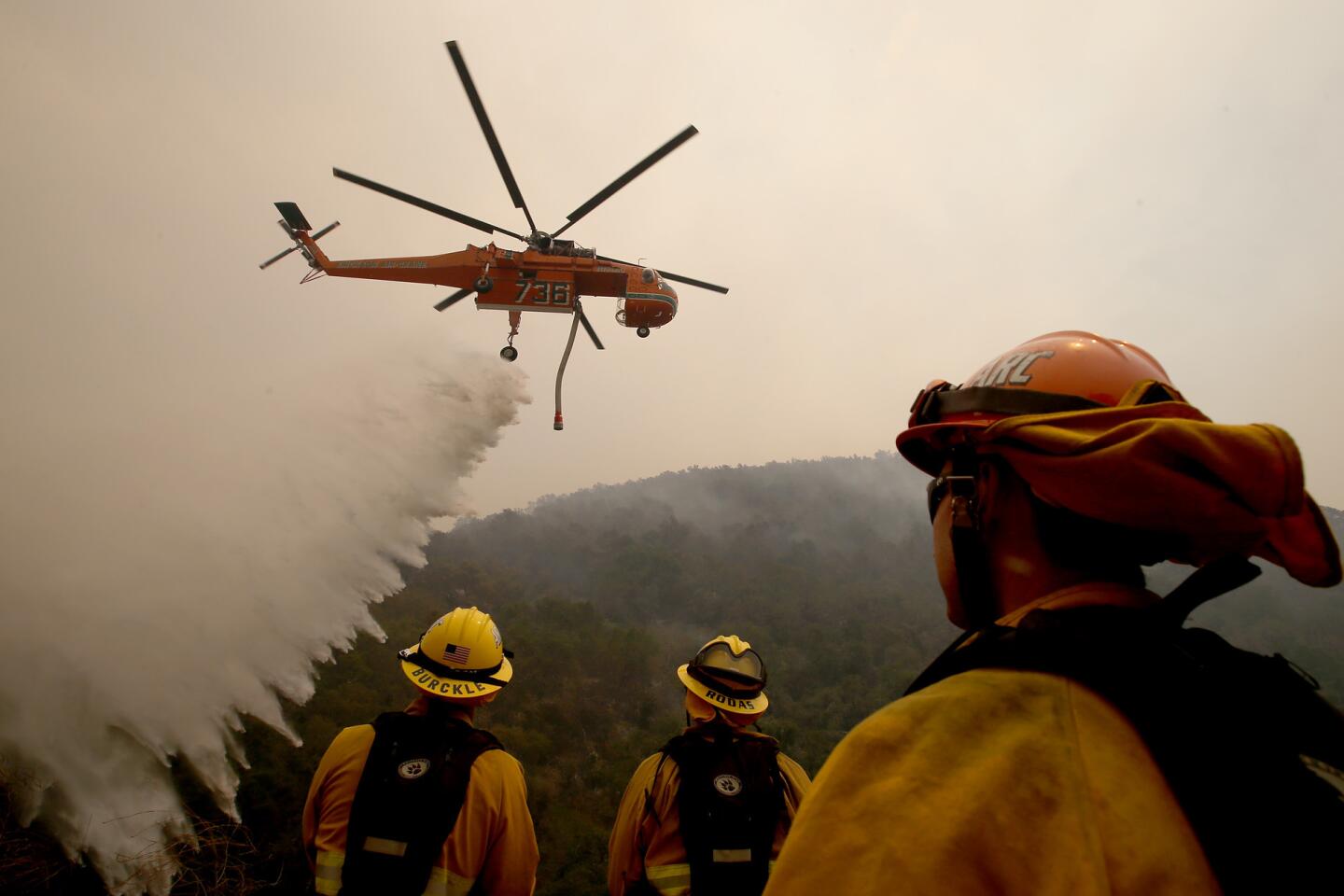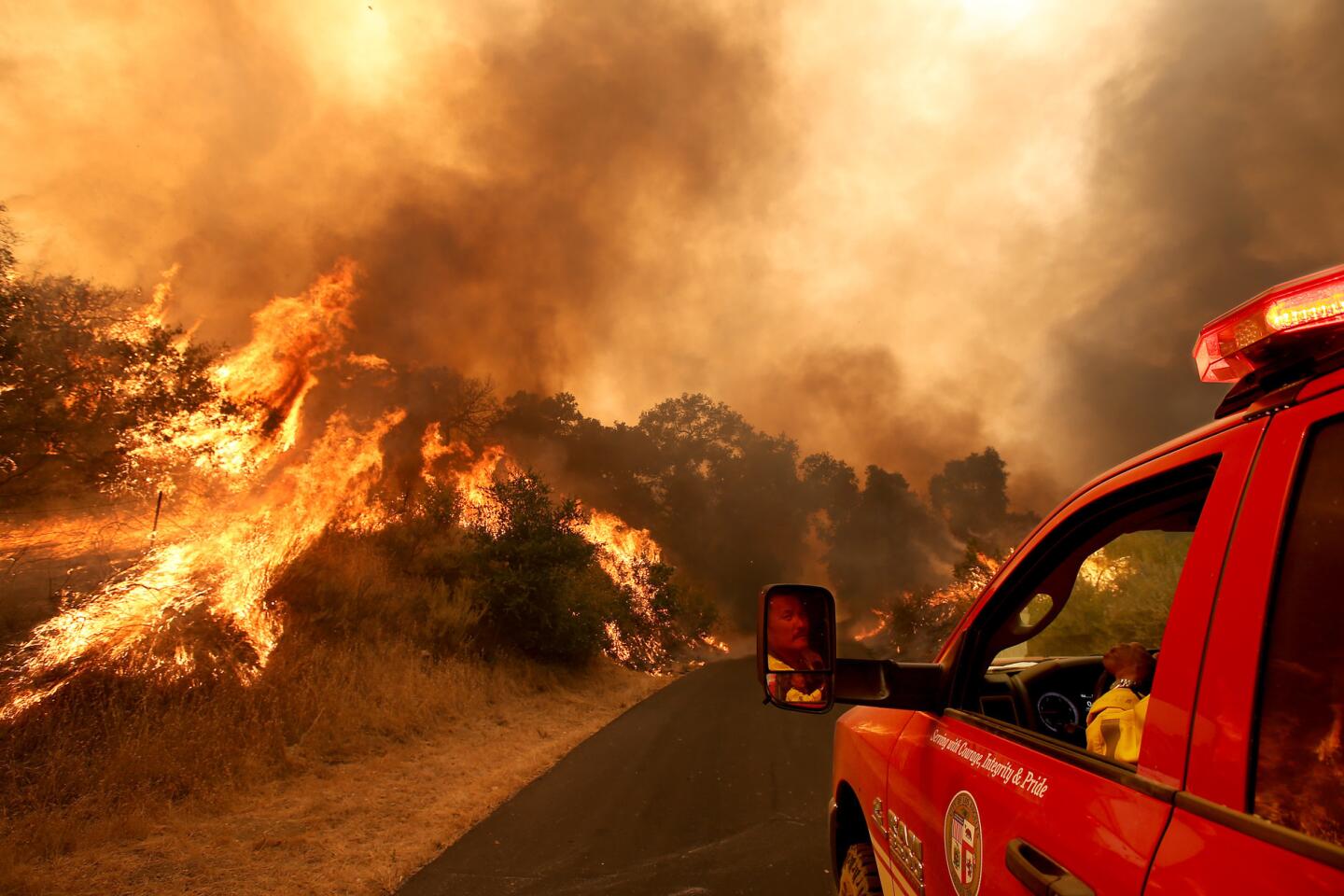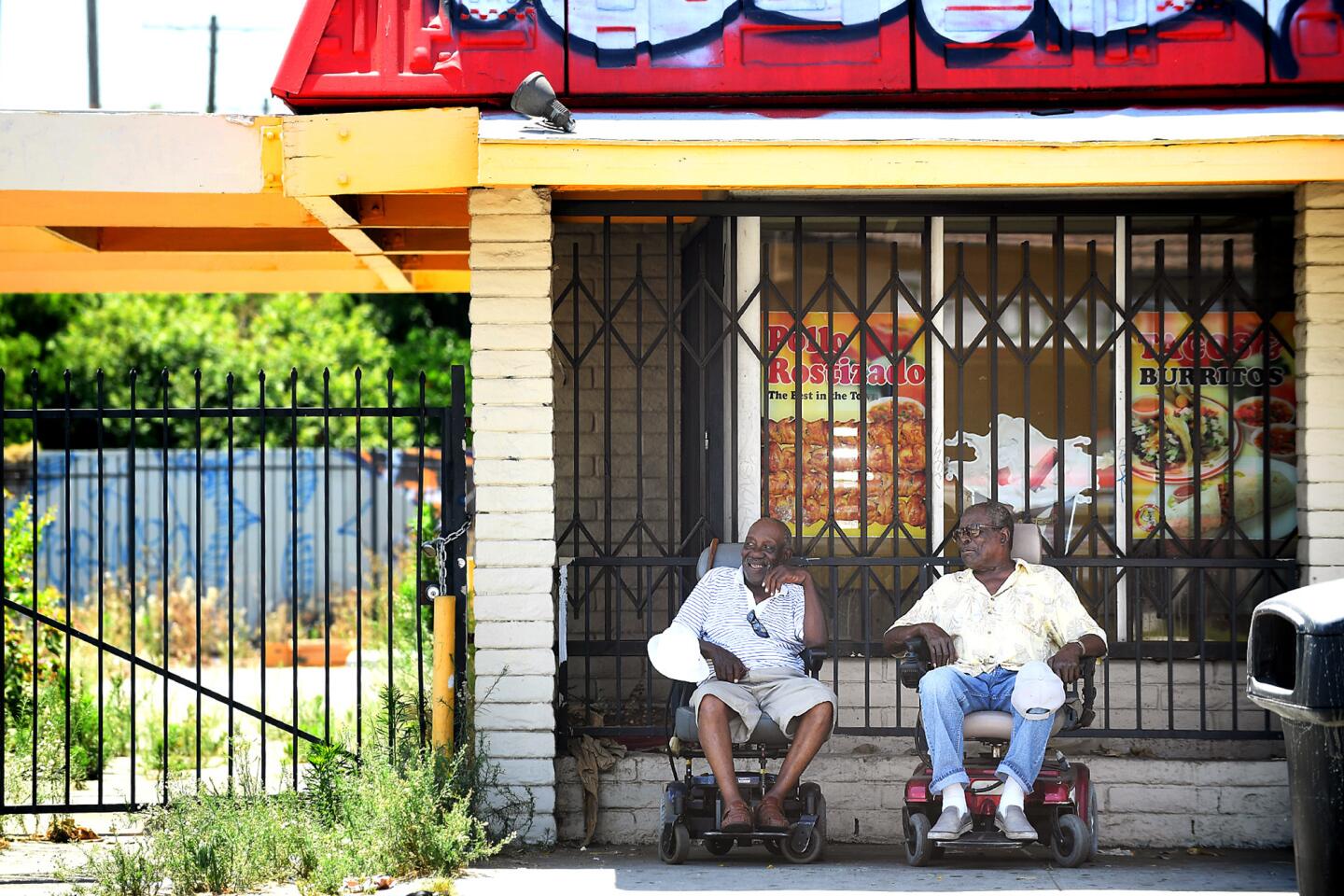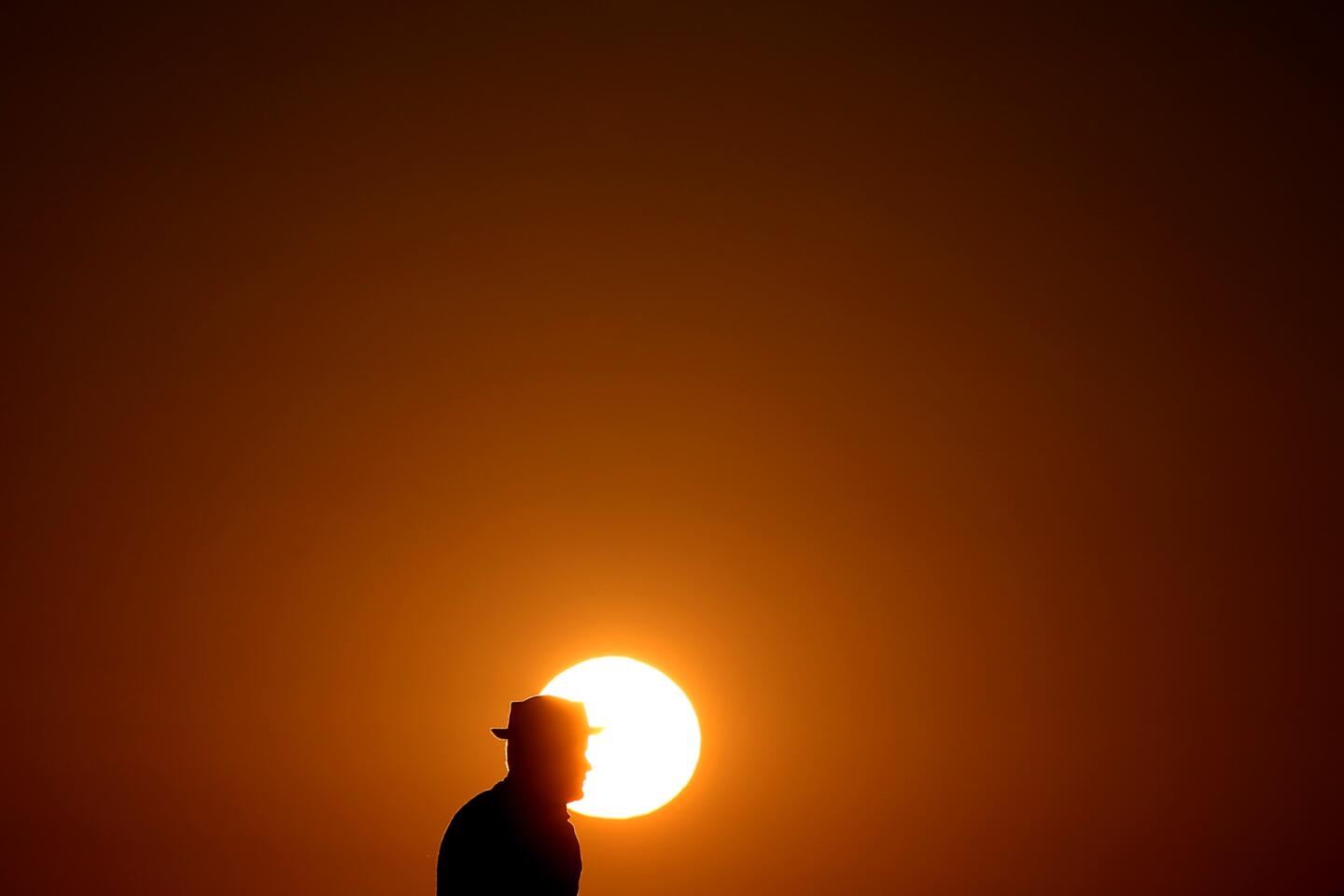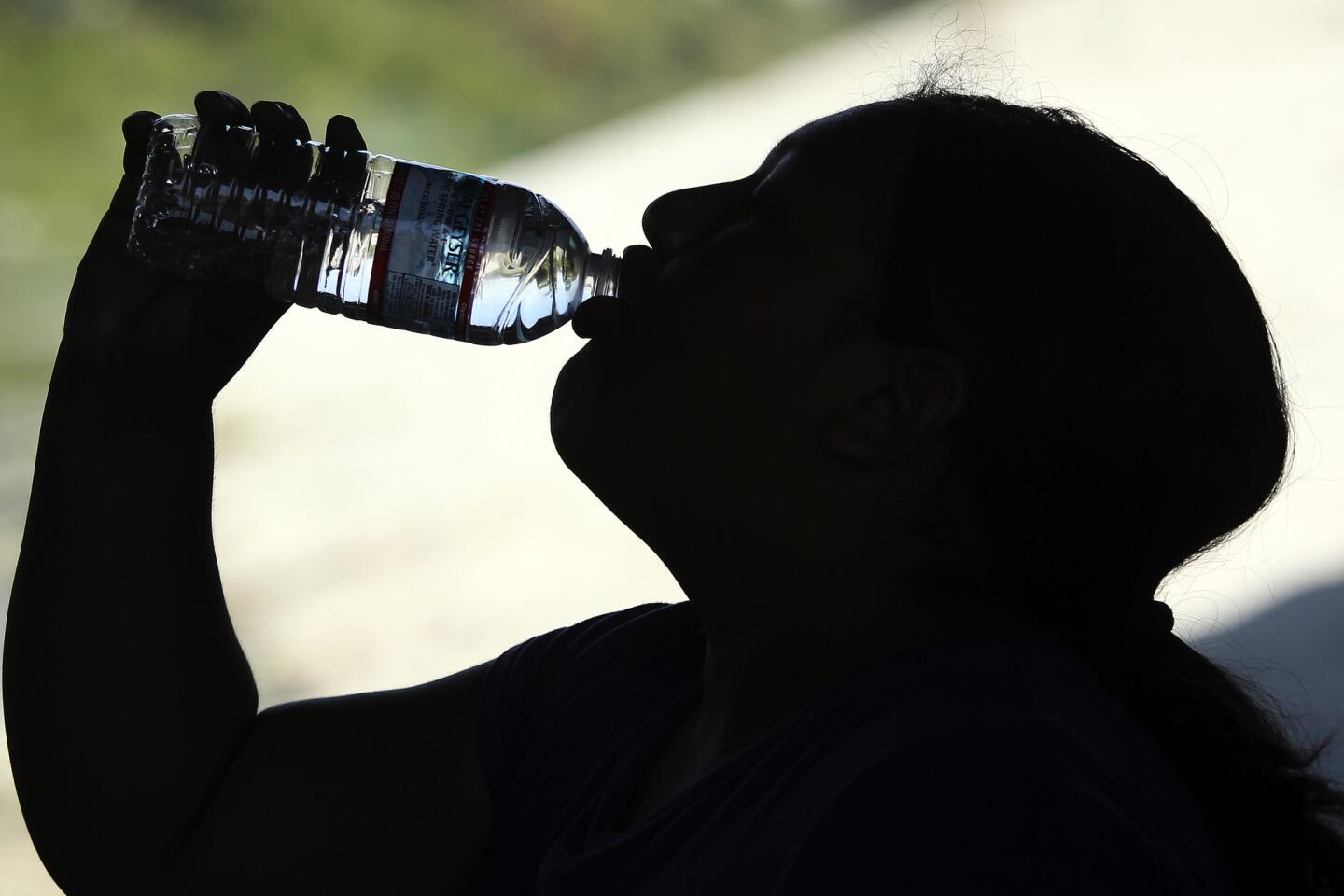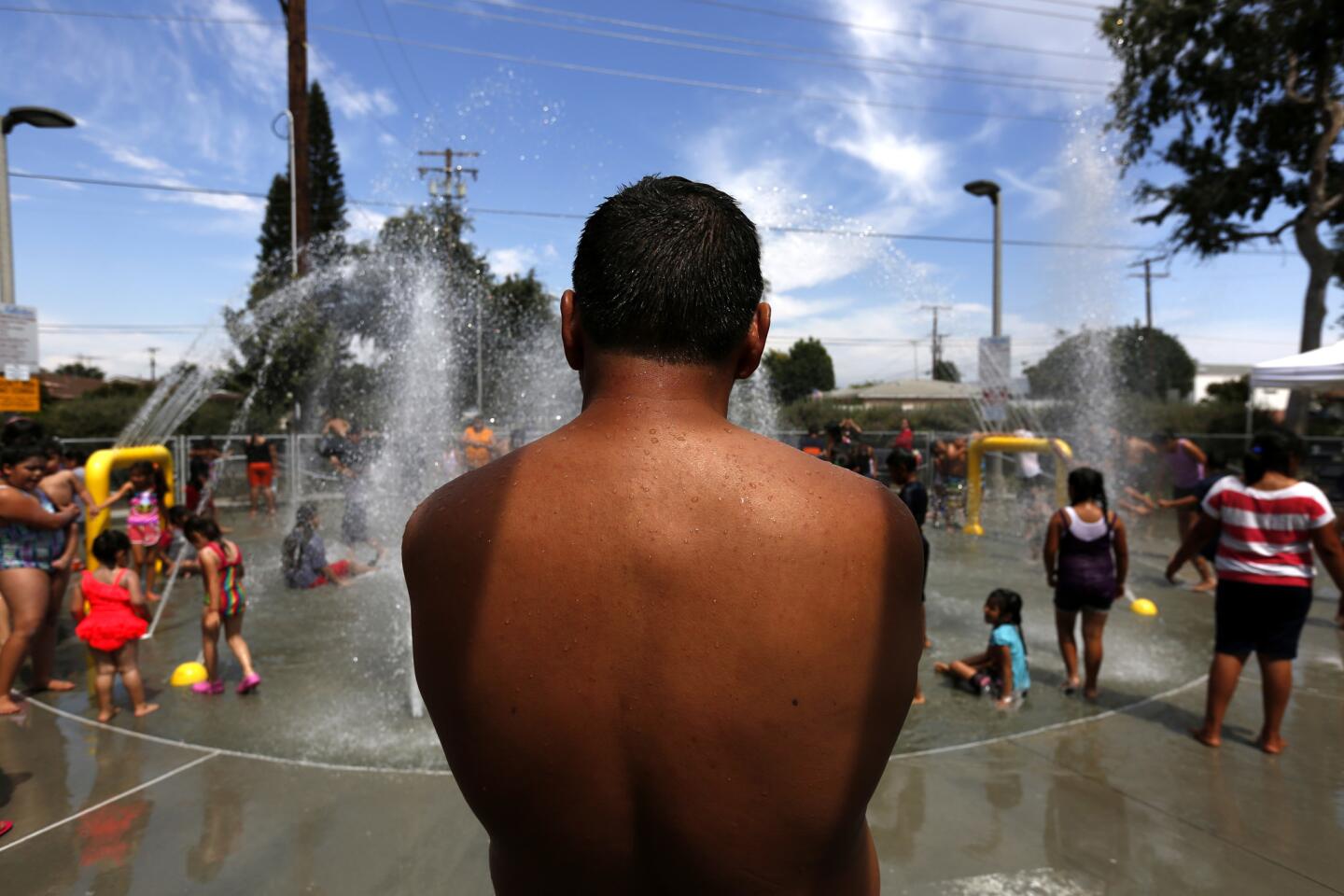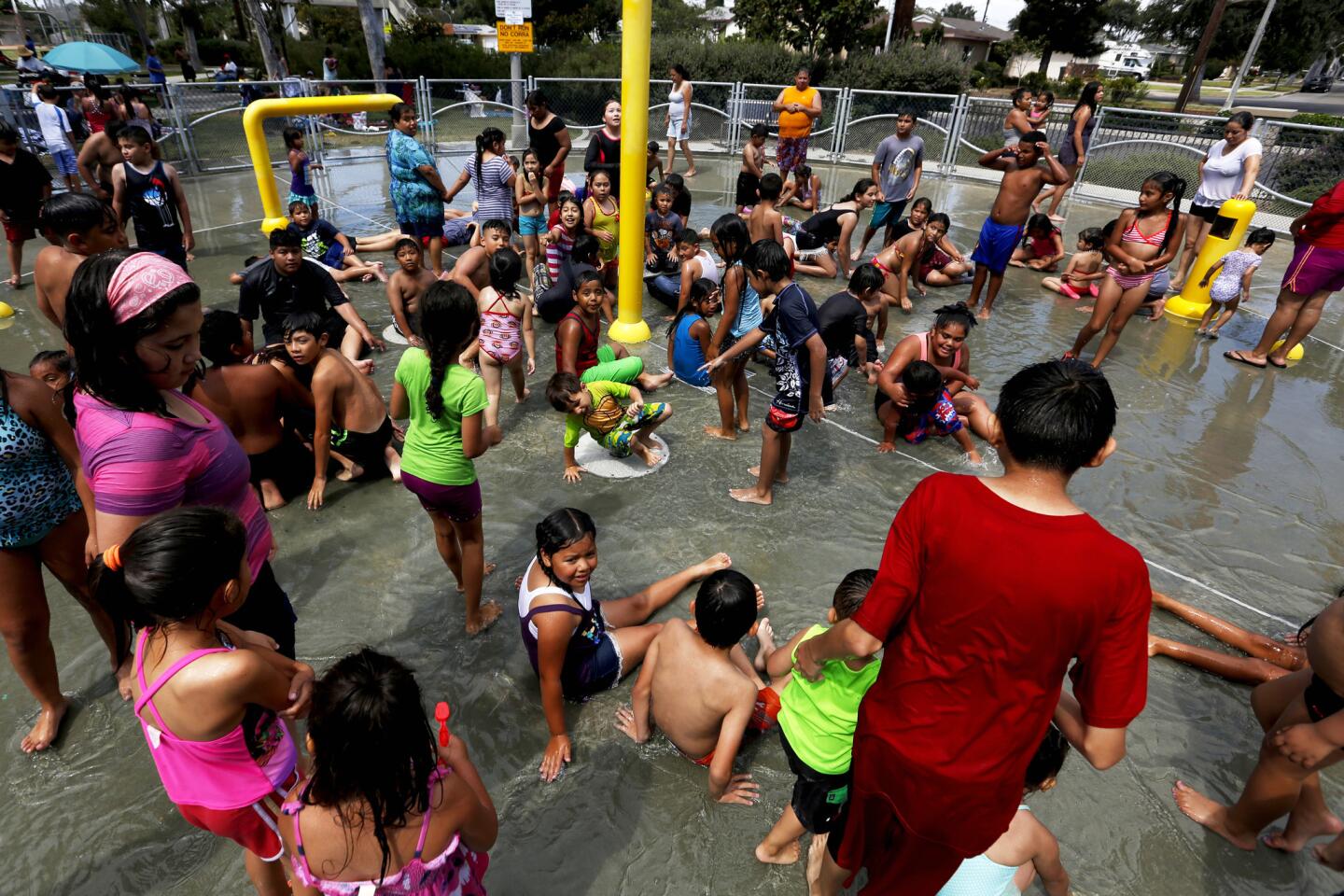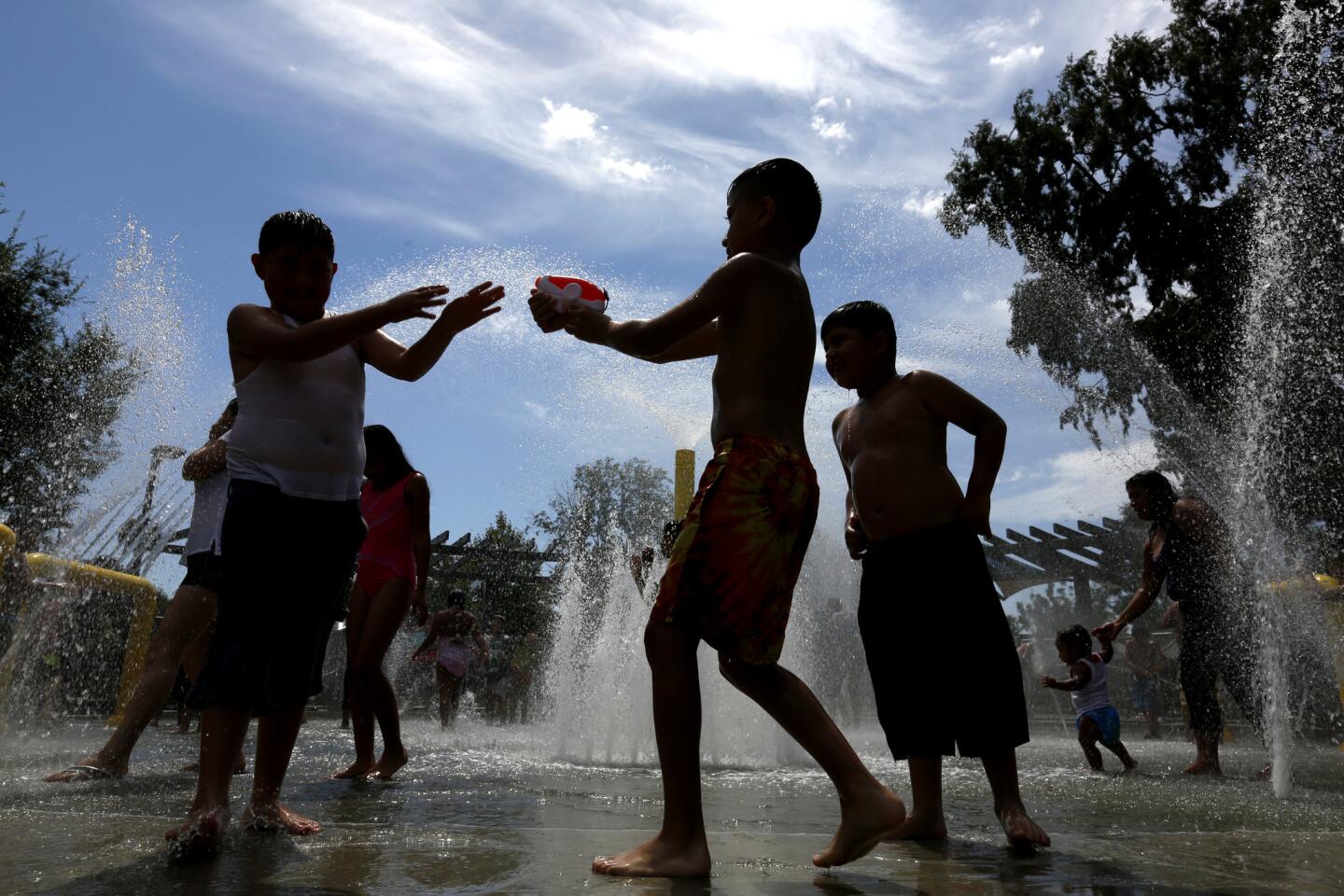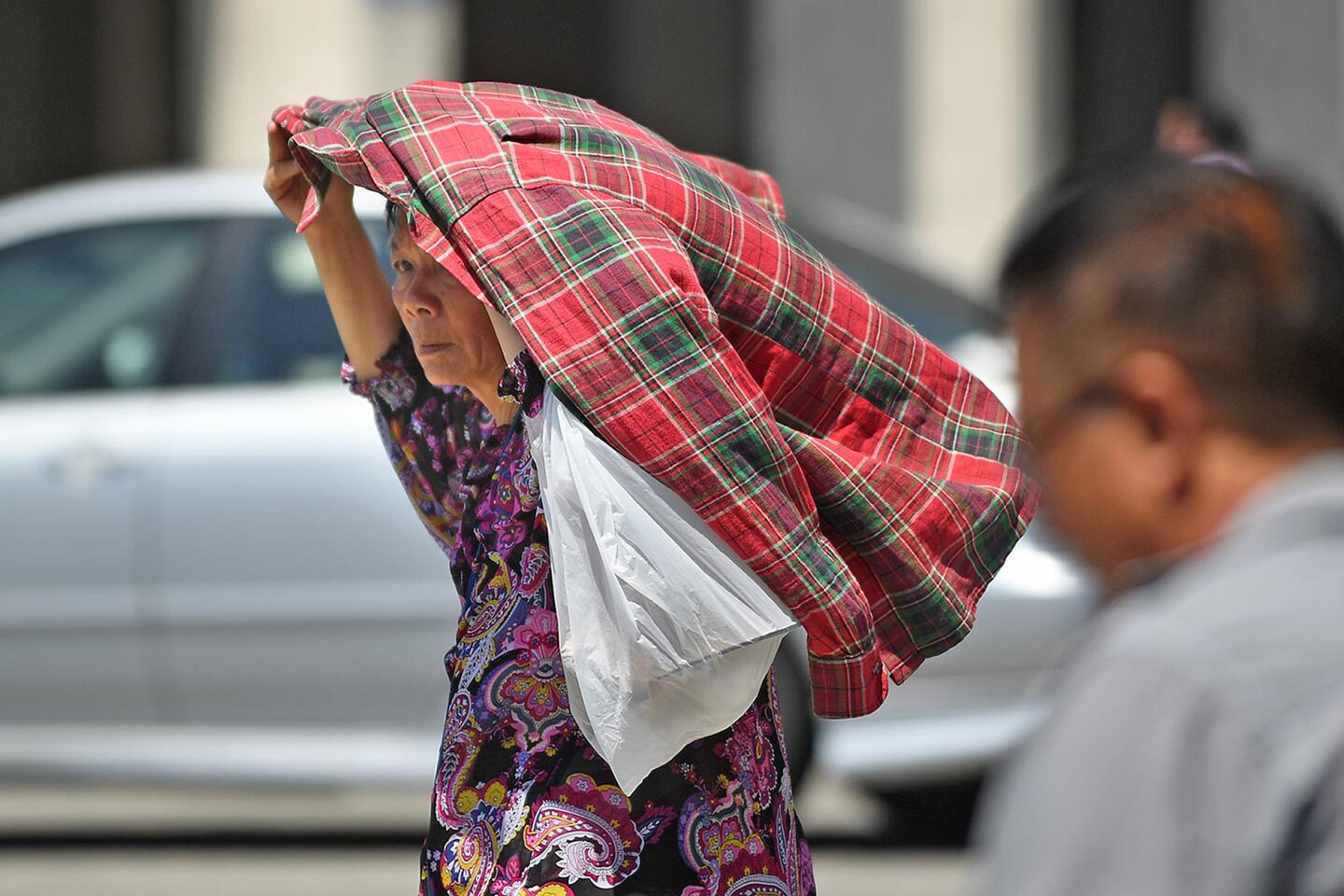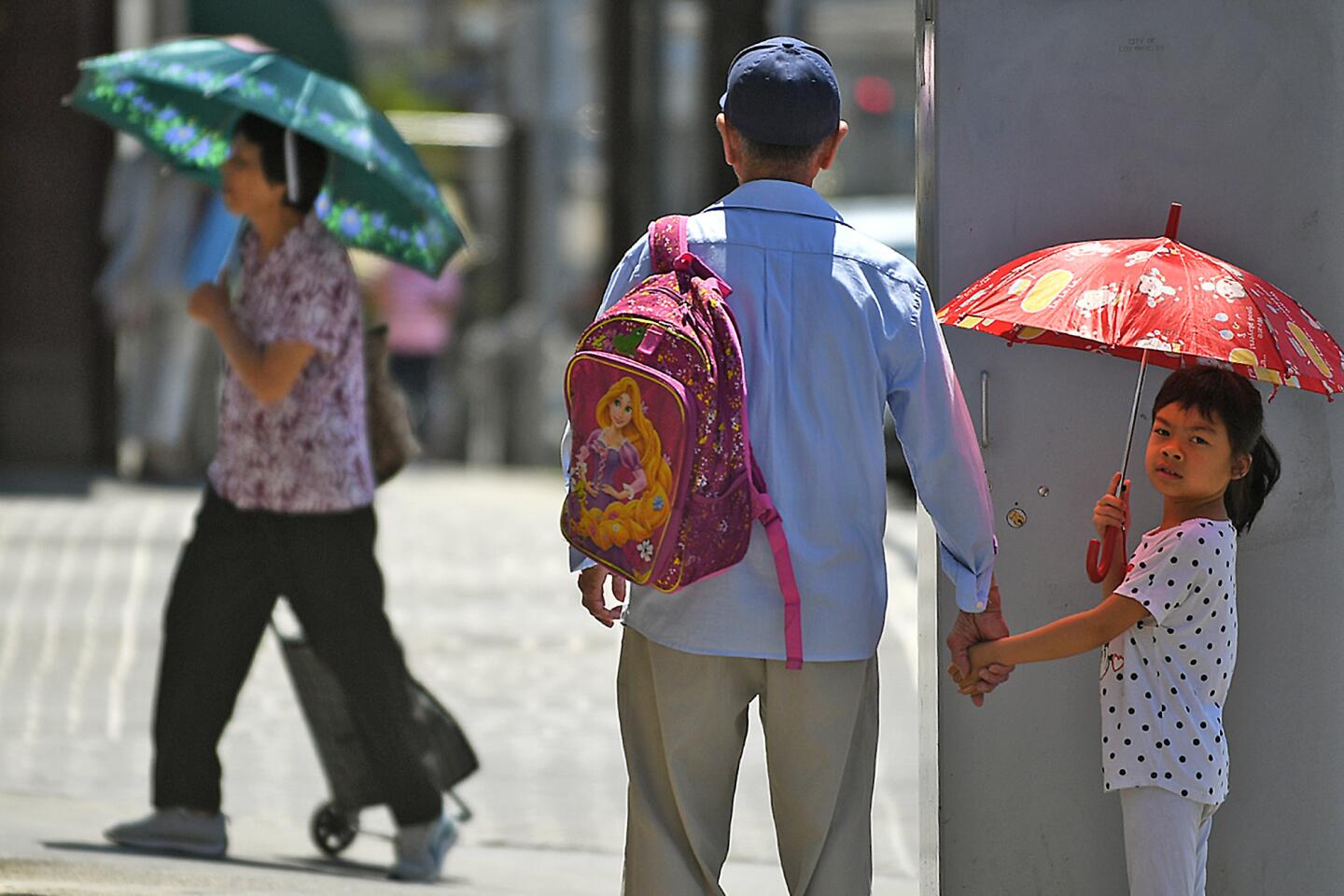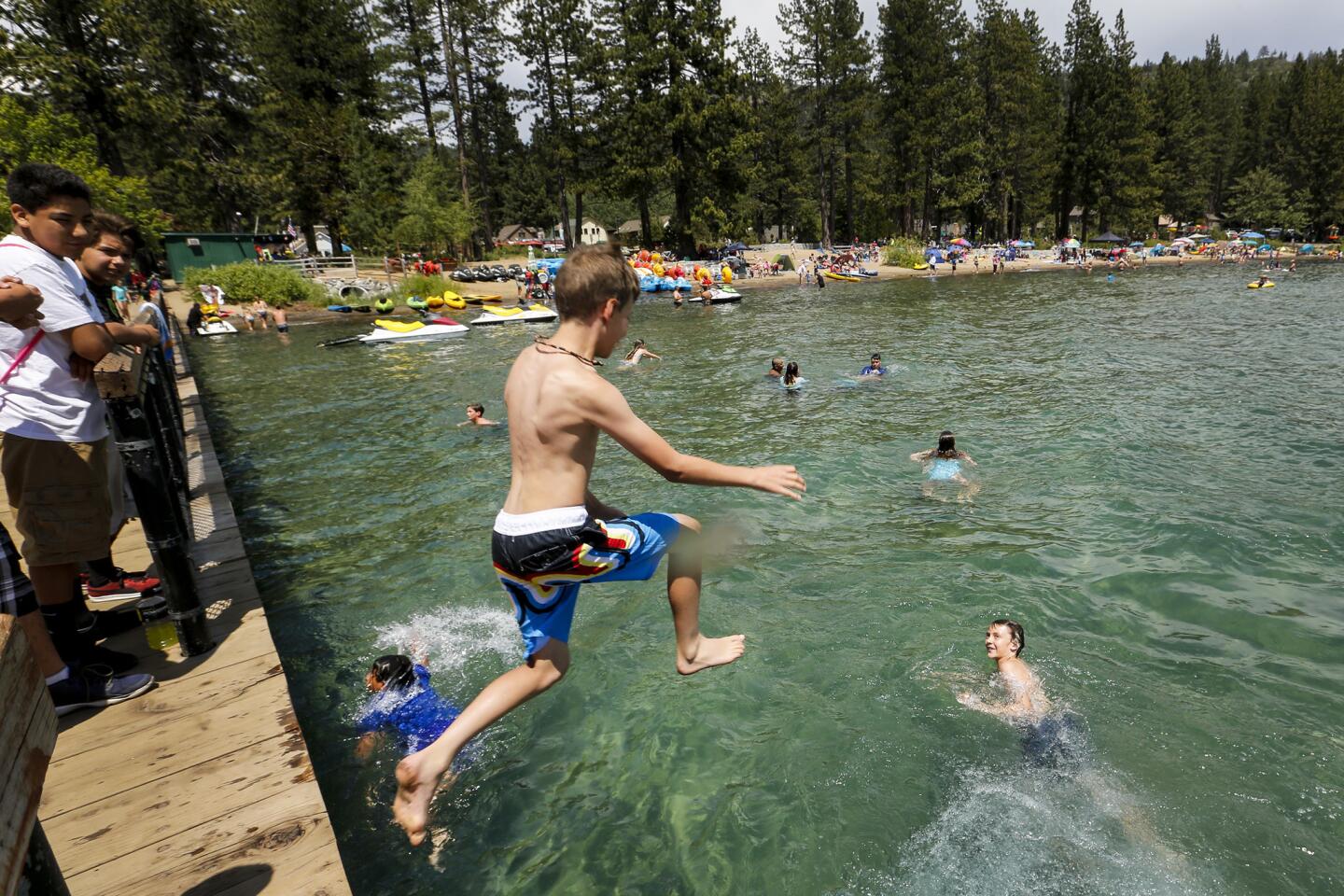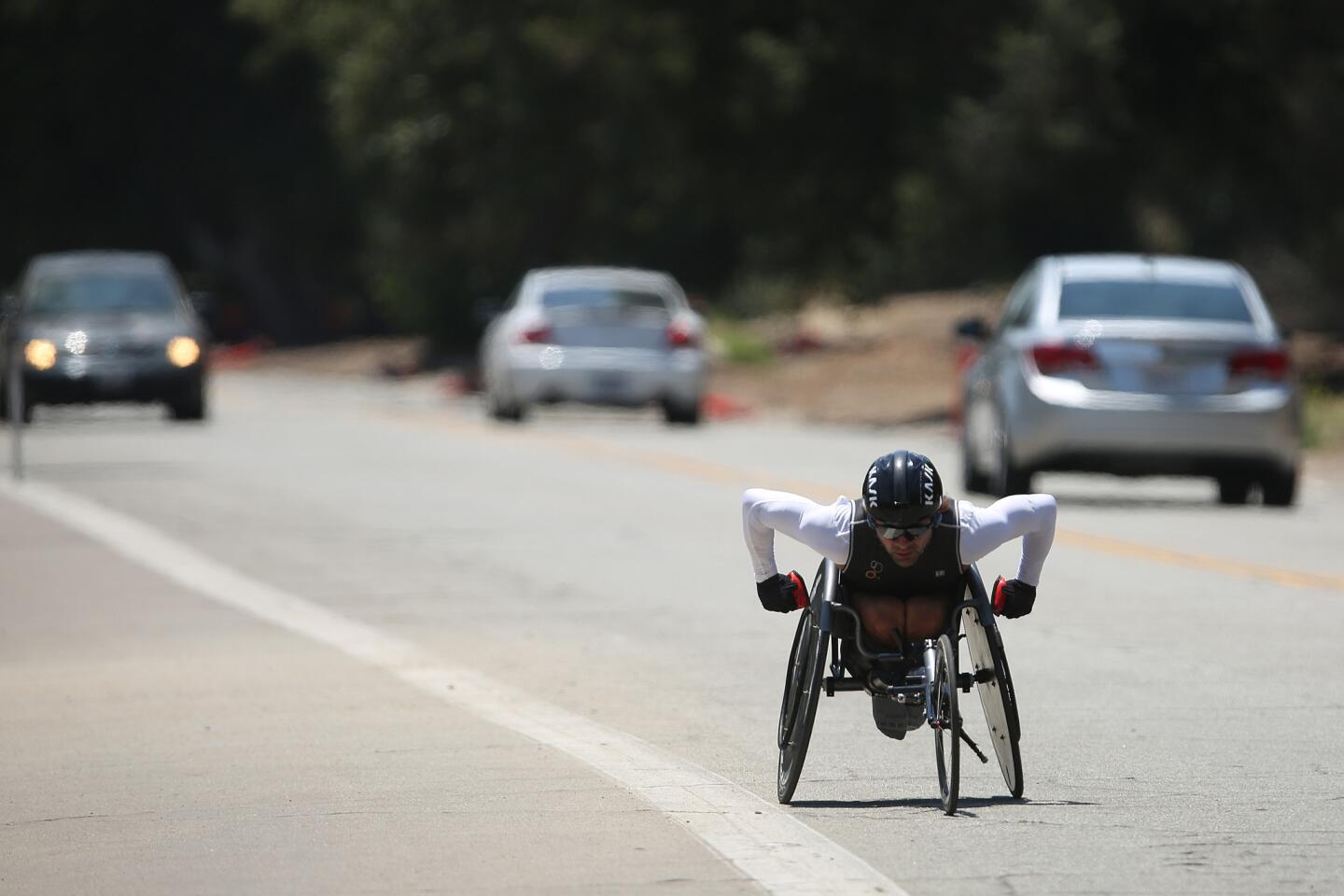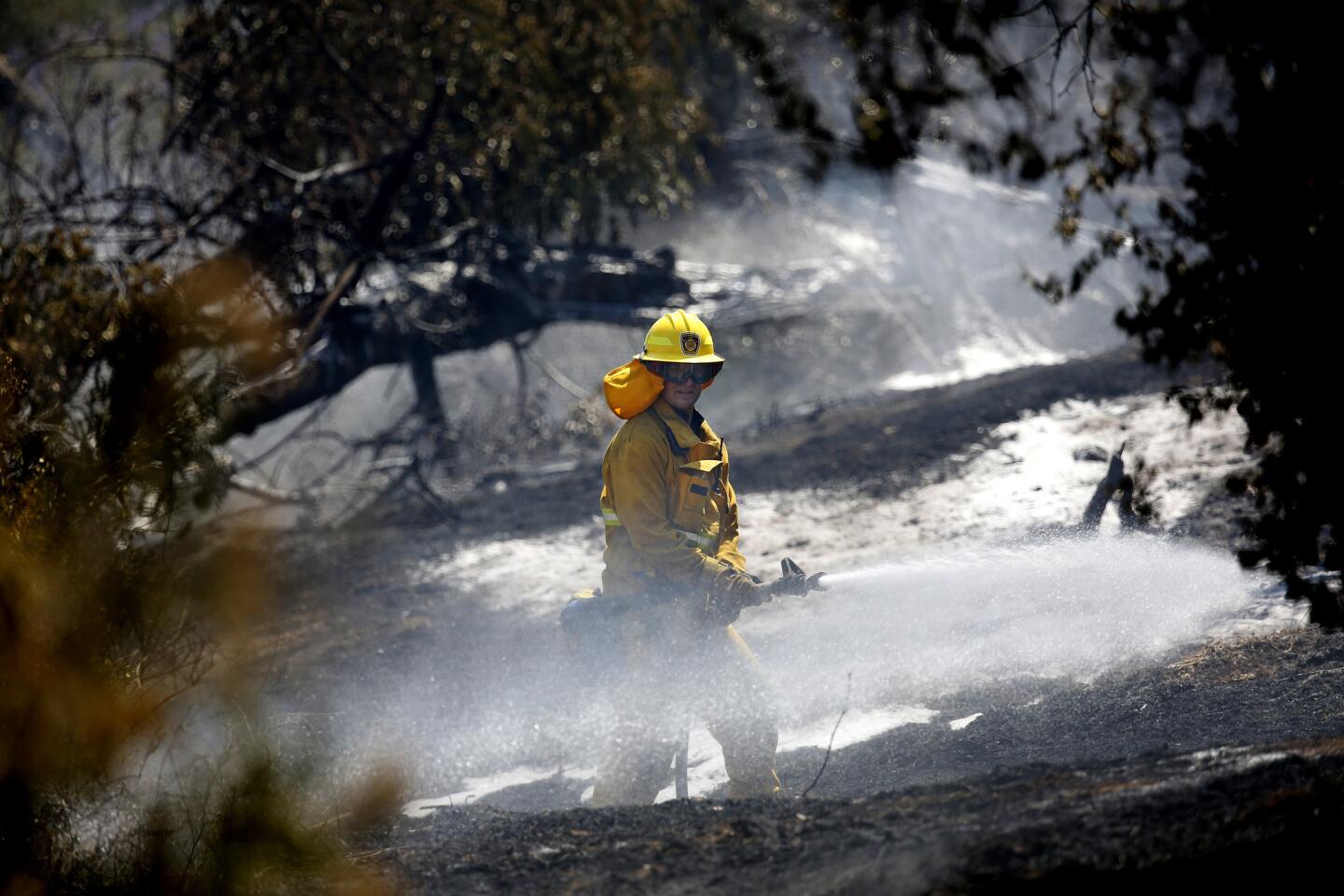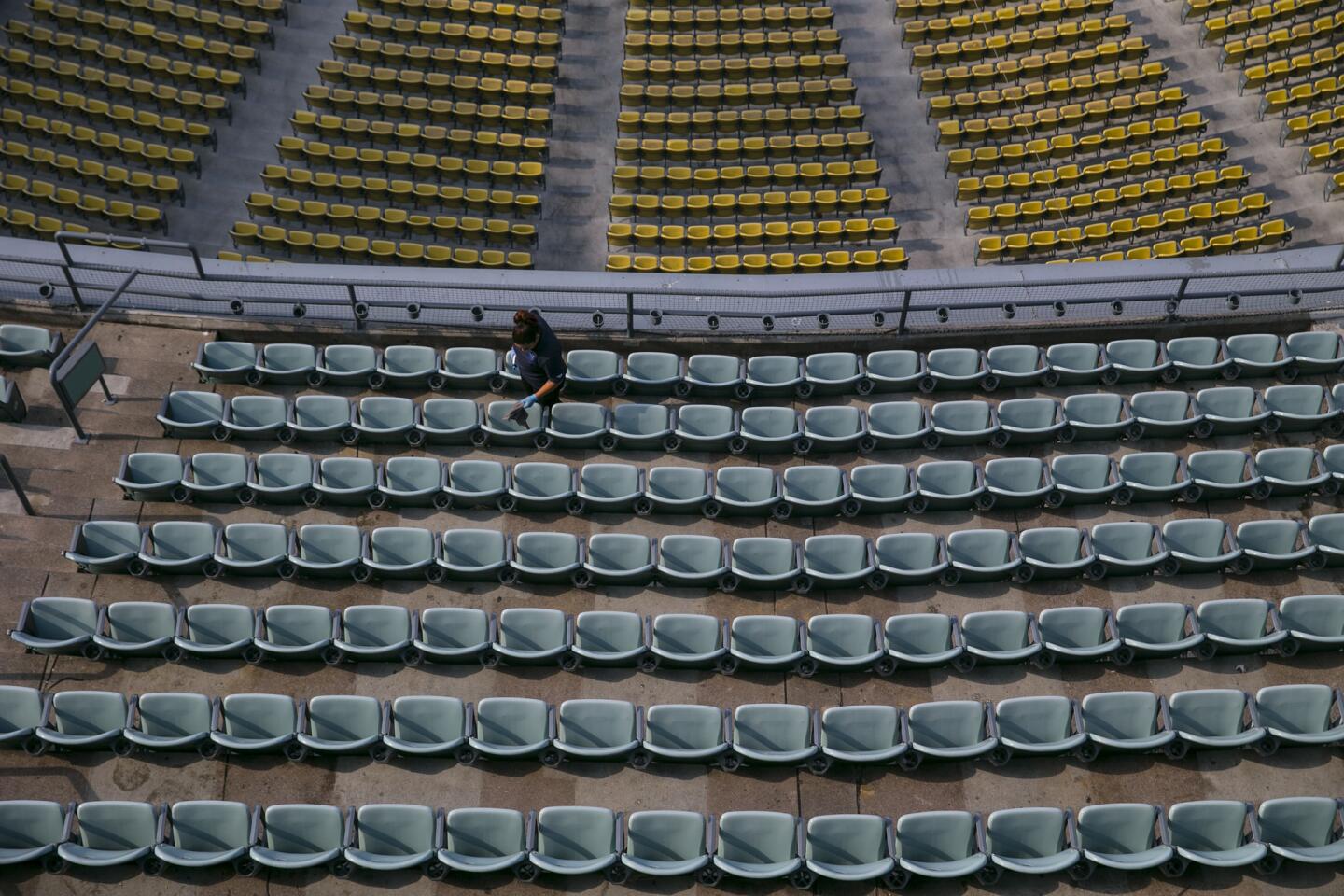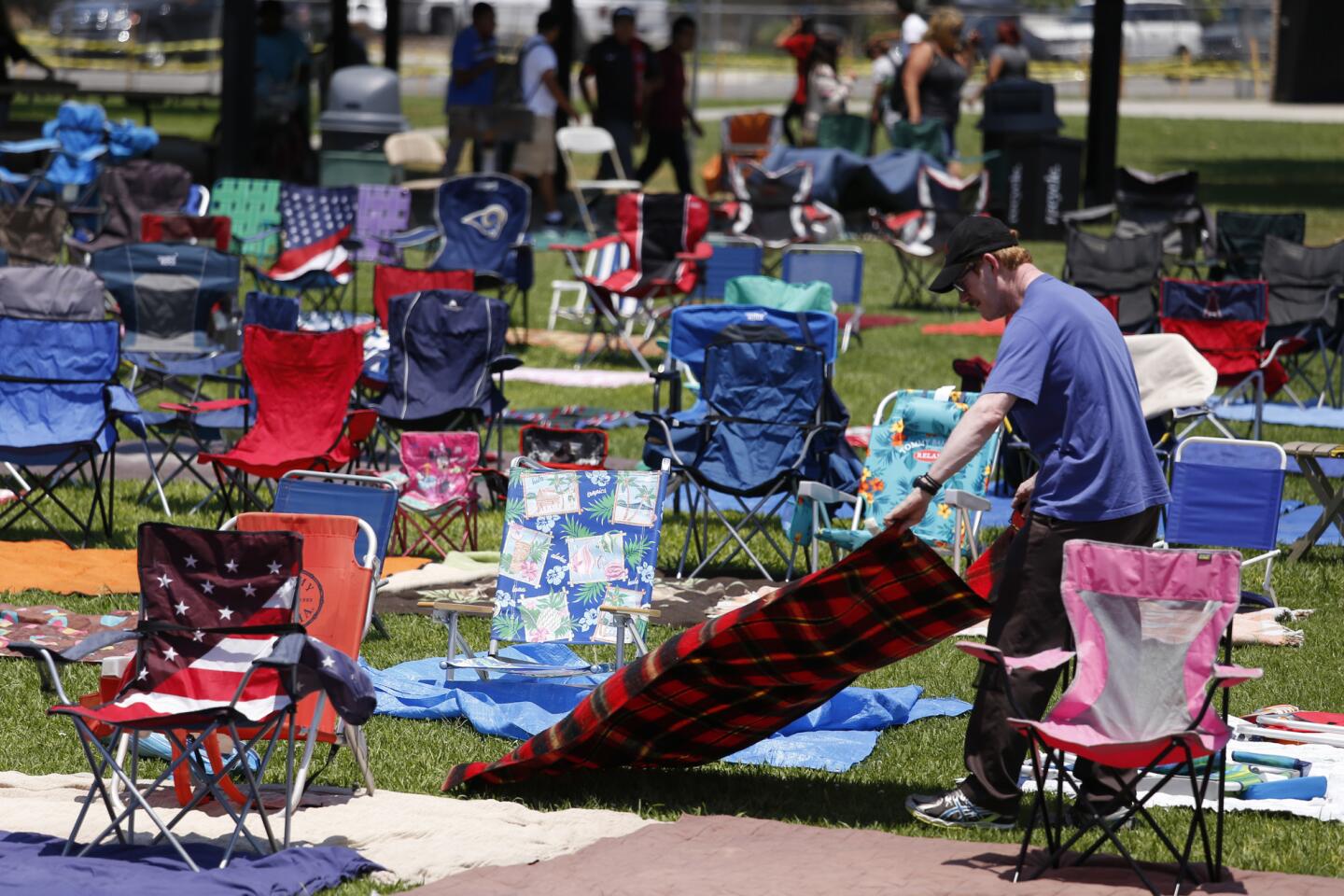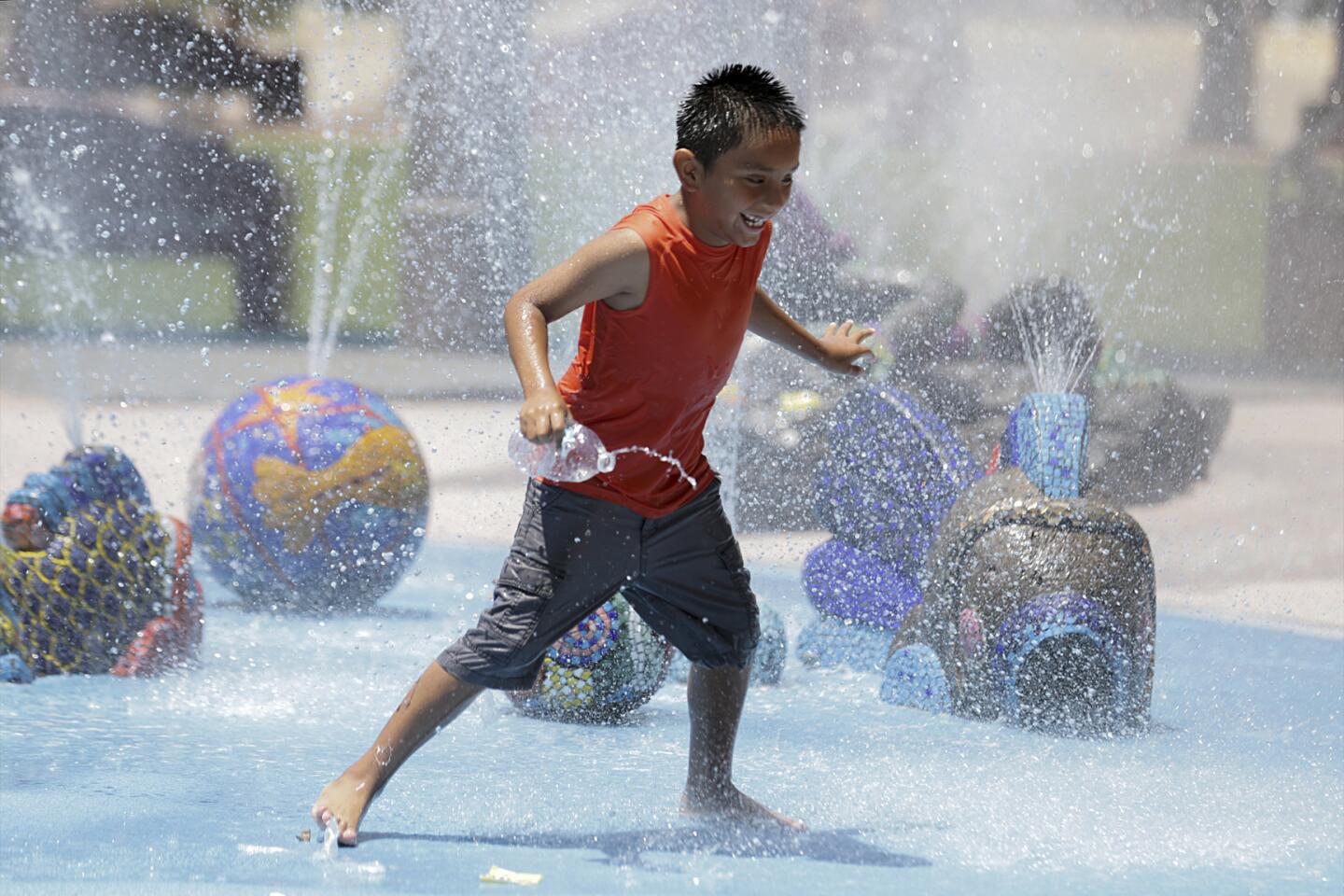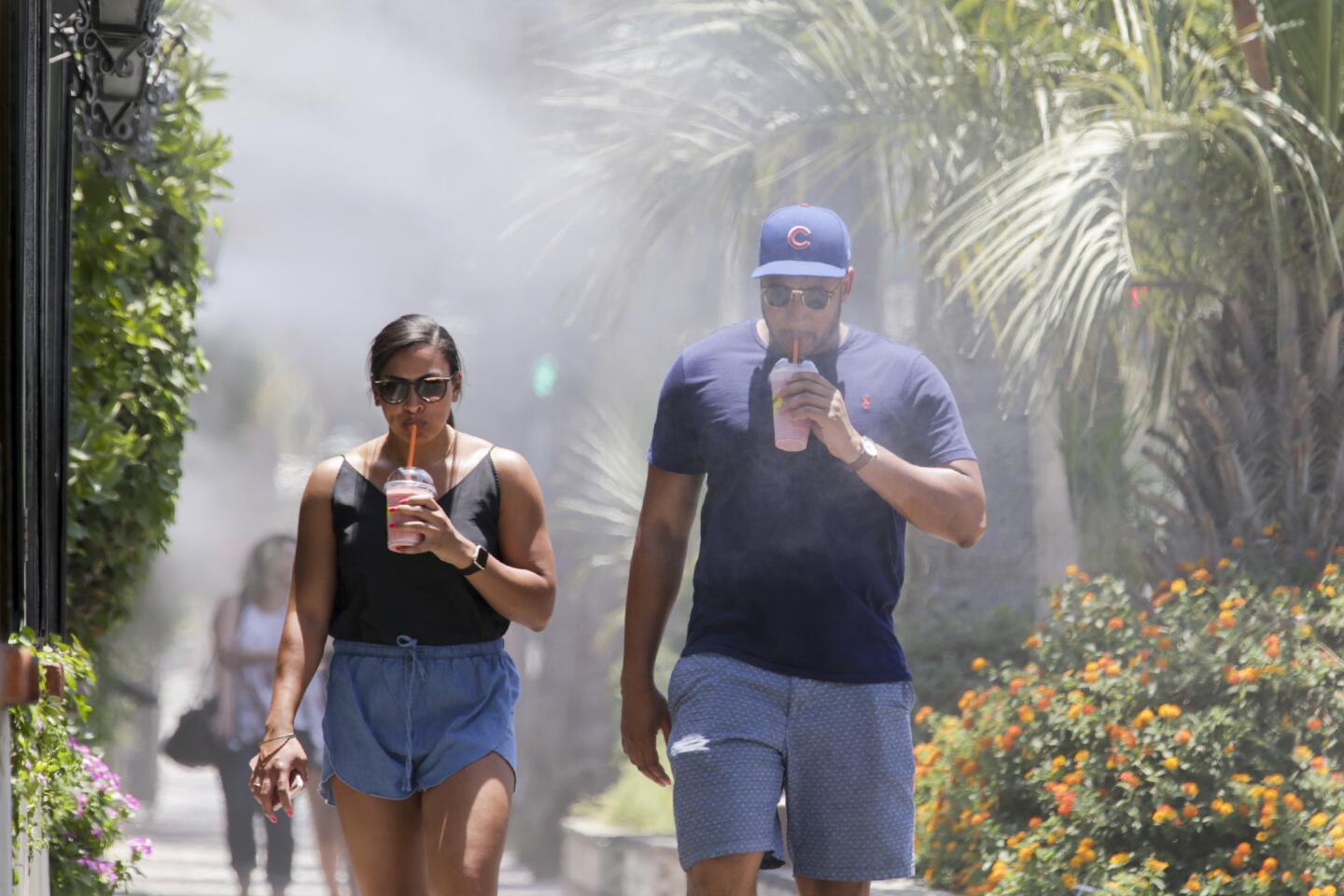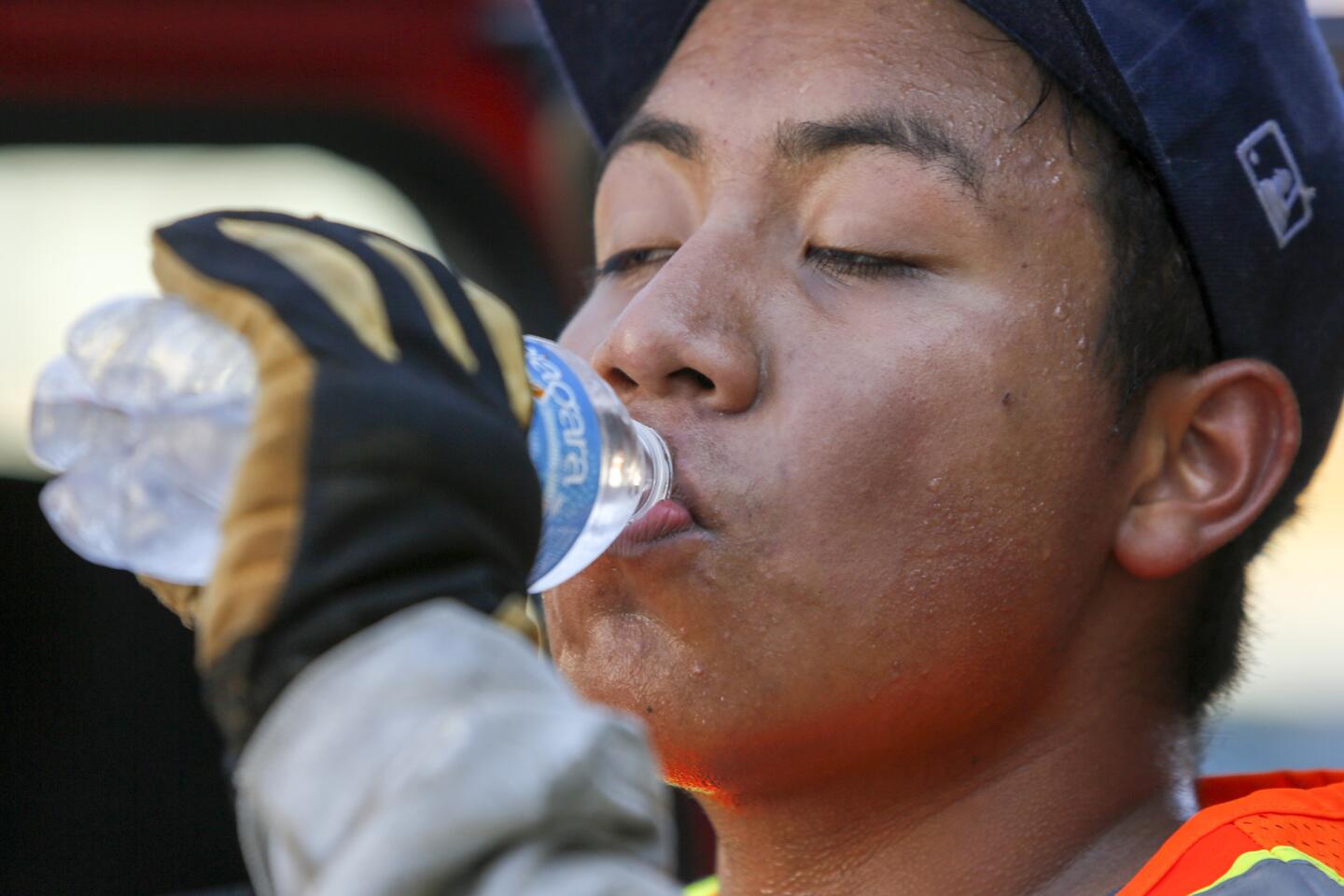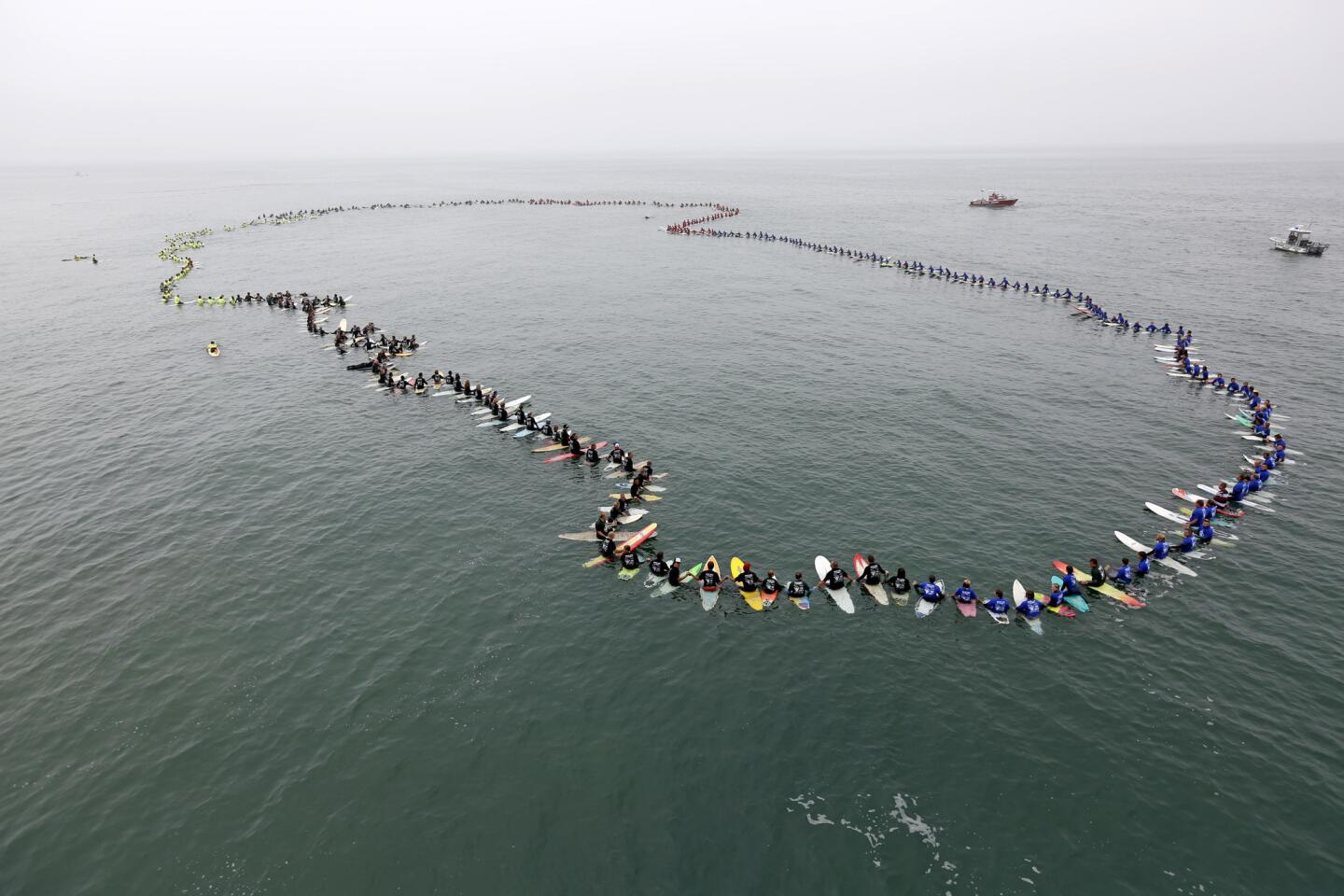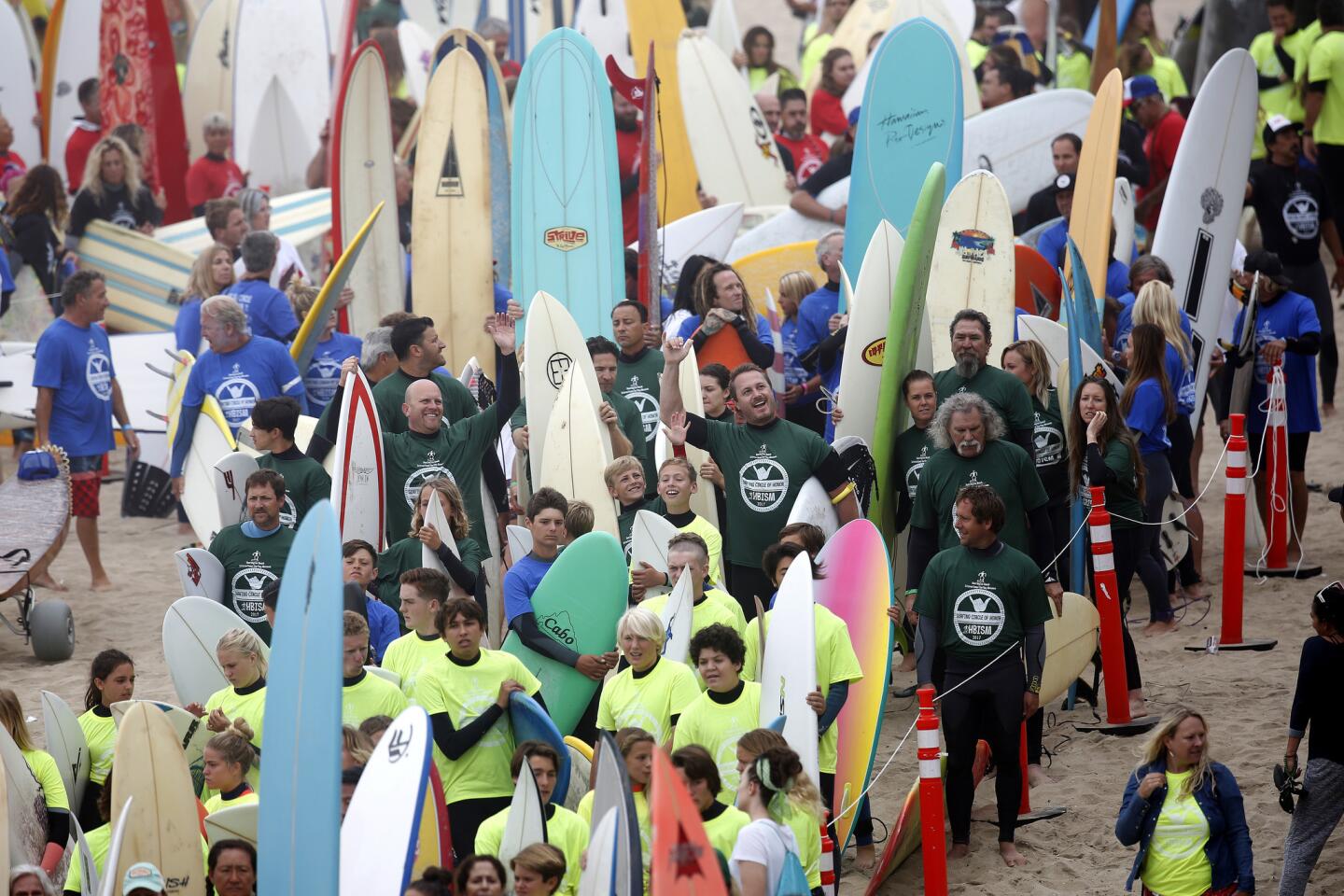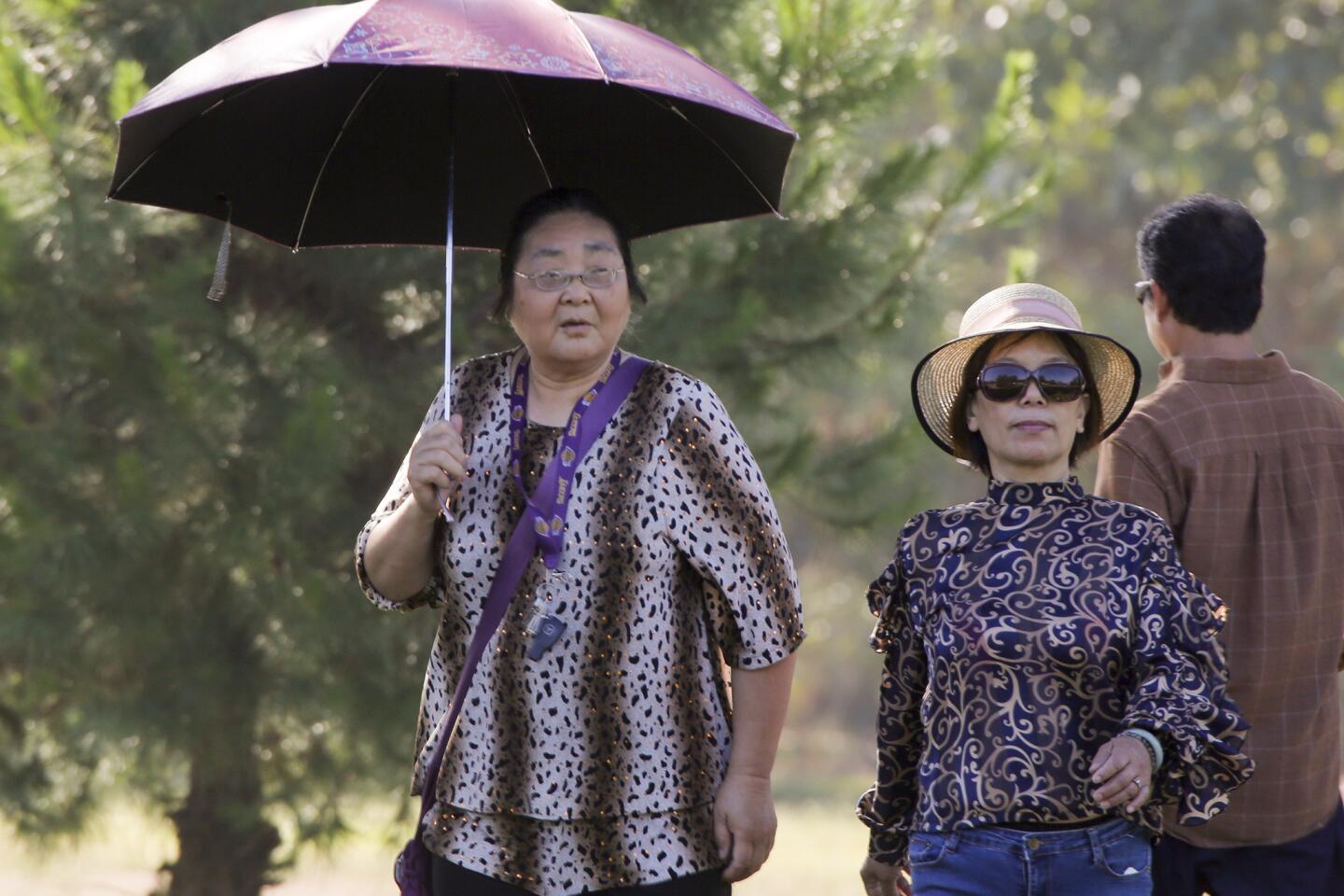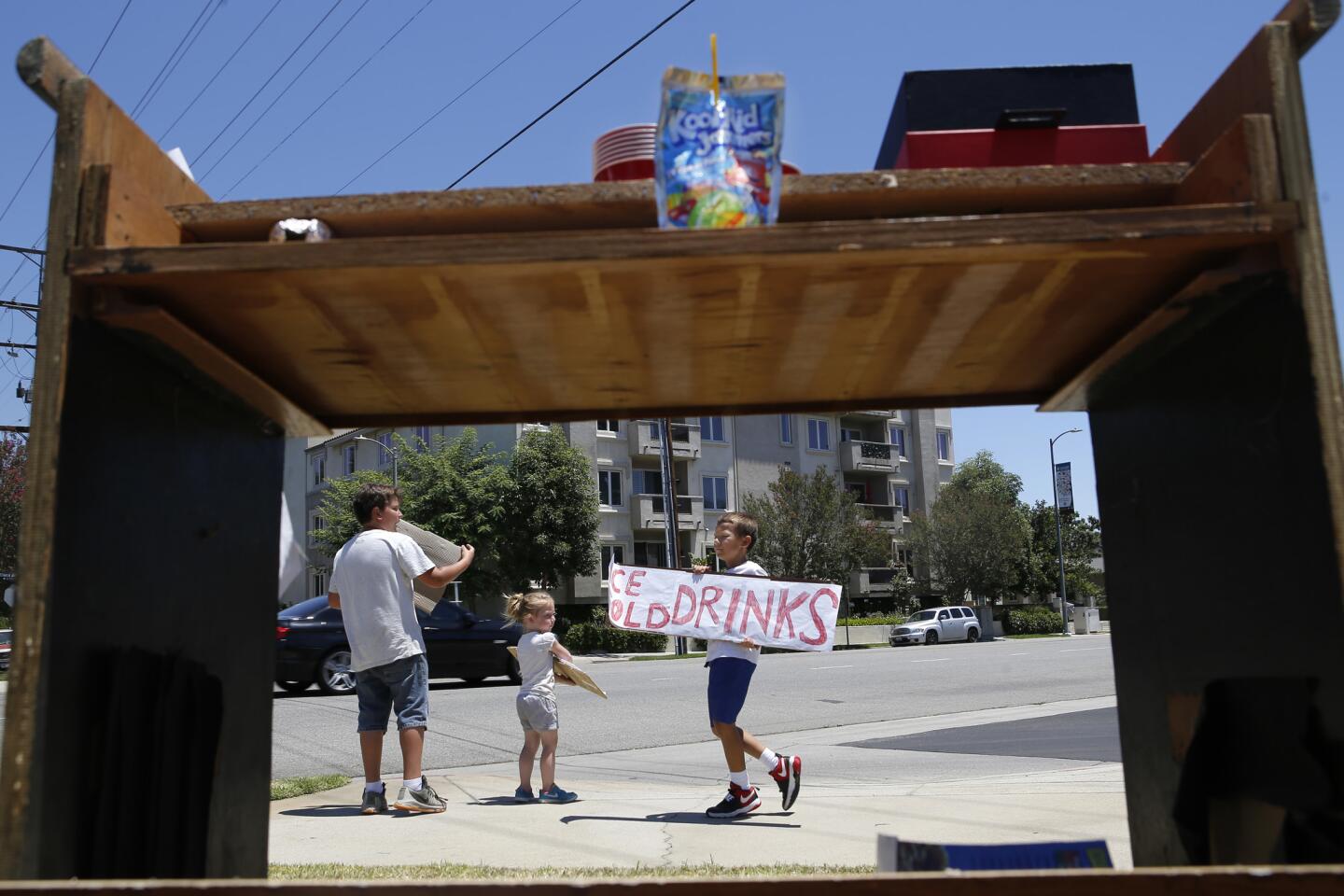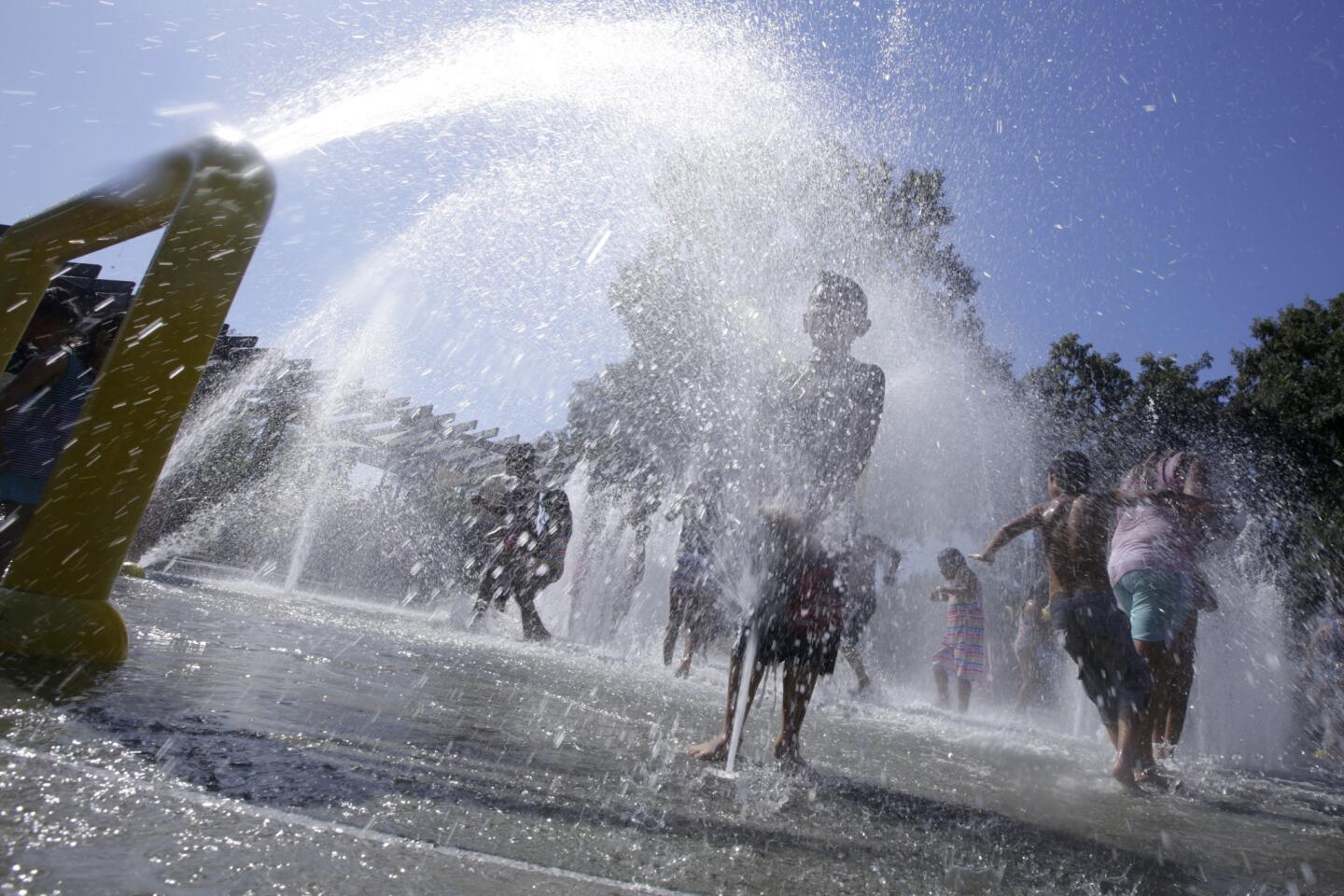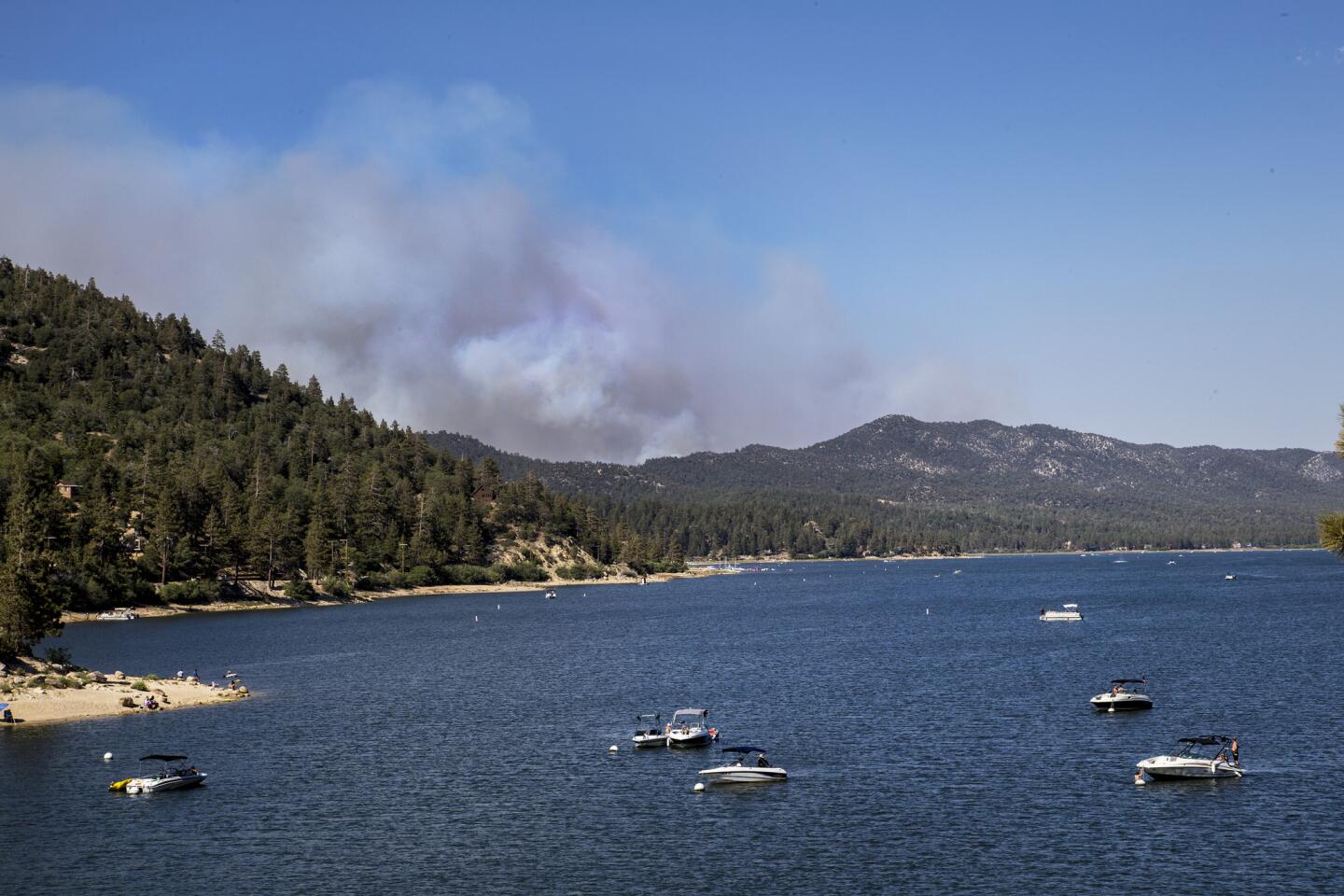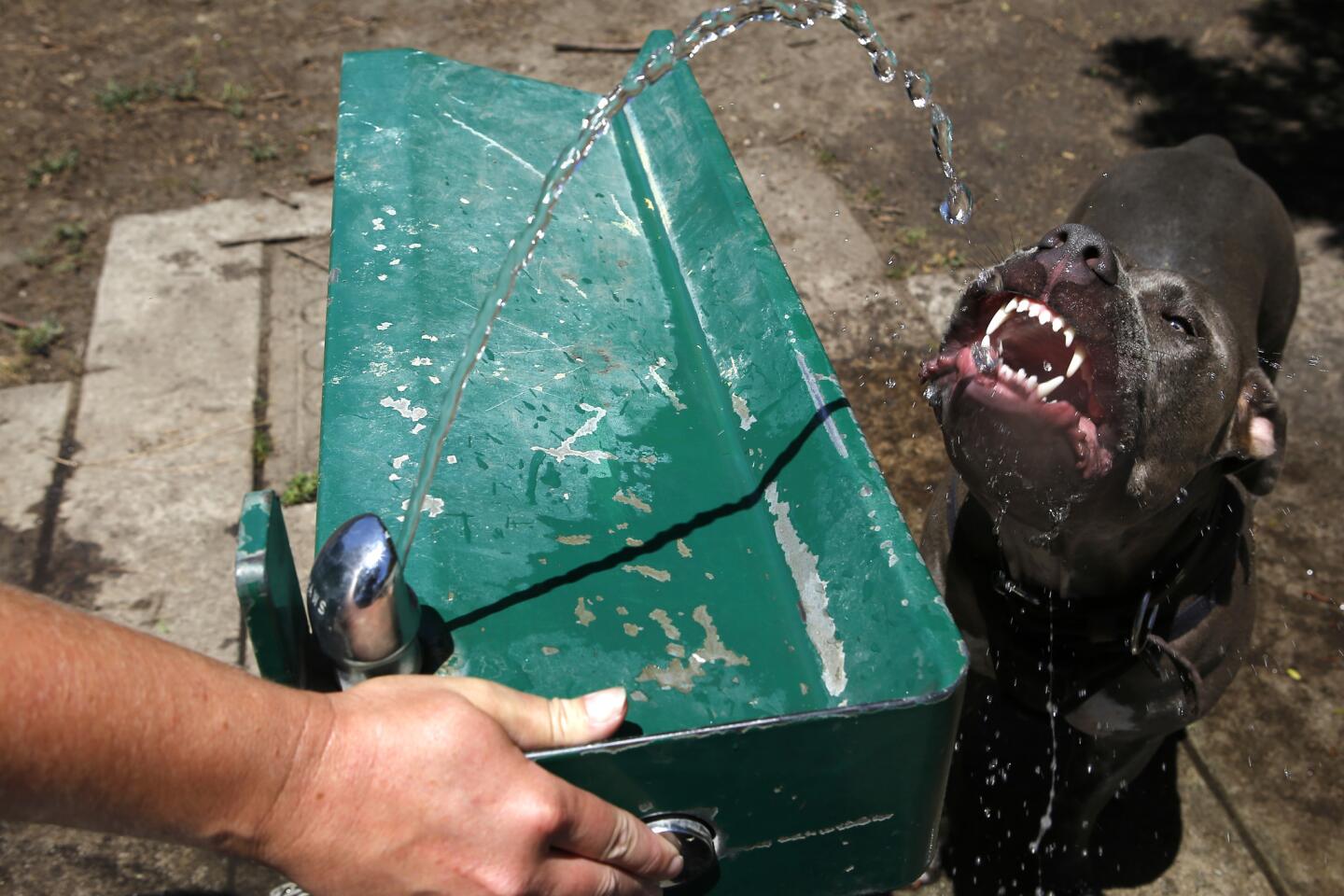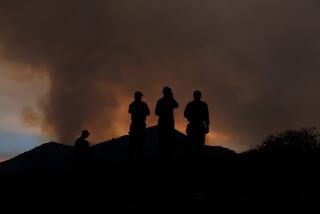Wildfires across California continue to grow: ‘We have very active burn conditions’
- Share via
Reporting from Santa Maria — Wildfires continued to rage across several California counties Sunday as record-breaking heat in some areas gave way to cooler temperatures.
The Alamo fire, near Highway 166 in northern Santa Barbara County, has grown to more than 23,000 acres near the San Luis Obispo County line, Cal Fire said Sunday. At least 200 people threatened by the blaze were evacuated from a remote area east of Santa Maria.
The Whittier fire near Lake Cachuma, about 35 miles south, has scorched about 7,800 acres, according to officials with Los Padres National Forest.
In Butte County, north of Sacramento, the Wall fire has burned 4,400 acres and destroyed 10 structures, while threatening hundreds more, according to Cal Fire. Four injuries have been reported.
Evacuation orders remain in effect throughout the area, officials said. The fire, which started Friday, is 17% contained.
The Winter fire in nearby Yolo County has burned 1,800 acres and is 25% contained, officials said. Mandatory evacuation orders have been issued in some areas.
In Santa Barbara County, water-dropping helicopters and retardant-dropping air tankers aided some 1,000 firefighters from across the state who were scrambling to contain the Alamo fire, the largest active fire in the state. Columns of smoke could be seen from miles away as the fire outraced efforts to contain it, at one point growing by more than 3,000 acres over a four-hour period Friday.
“Low humidity, high heat and the winds are right — and there’s just a lot of stuff to burn,” said Santa Barbara County spokeswoman Gina DePinto. She said firefighters’ main focus Saturday was to secure the south and east sides of the blaze. If winds from the northeast shift toward the northwest, as expected, homes could burn, she said.
If the Alamo fire crosses Tepusquet Canyon, it could push farther east into an area of the Los Padres National Forest that burned in 2009, which might help slow the fire because the brush and the trees are relatively young, officials said.
But between the high temperatures and changing winds, Cal Fire spokesman Chris Elms said, the fire fight will be tough regardless of the fuel.
“It’s off to the races,” Elms said of the fire’s growth.
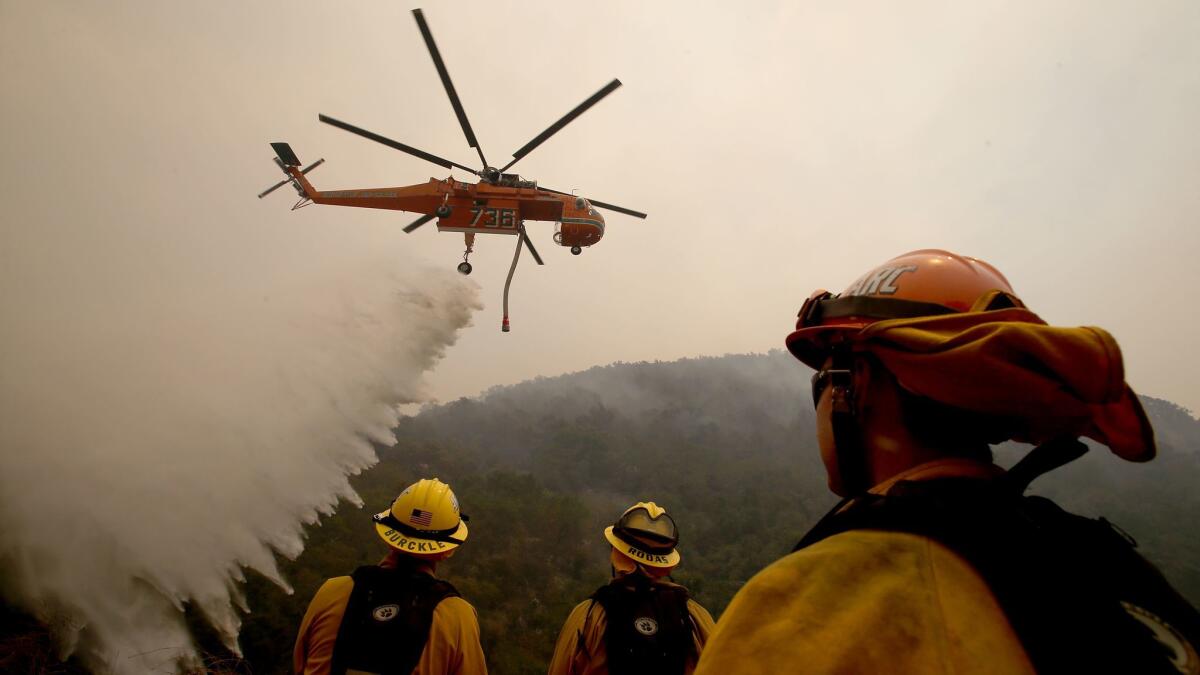
The Alamo fire was 10% contained as of Sunday morning, officials said.
The fire near Lake Cachuma, called the Whittier fire, was burning on both sides of Highway 154 and initially left some 80 campers trapped at the Circle V Ranch Camp. But U.S. Forest Service firefighters reached the group, which was sheltering in place, said Capt. Dave Zaniboni of the Santa Barbara County Fire Department.
The fire, which started about 2 p.m. Saturday, lies in an area filled with oaks, Chamise brush, Manzanita shrubs and ceanothus plants that haven’t burned since 1955, said Gary Helming, the battalion chief for the U.S. Forest Service in Los Padres National Forest.
“The brush is tall and thick,” he said. “We have very active burn conditions. We are seeing rapid and large growth.”
By Saturday evening, the Whittier fire had reached the top of the Santa Ynez mountain range and flames could be seen from Goleta, north of Santa Barbara. The fire, which is 5% contained, has burned 20 structures on both sides of Highway 154, officials said.
Sarah Gustafson, who moved from Washington to California seven months ago, lives in the shadow of the Santa Ynez Mountains down a winding road between Lake Cachuma and San Marcos Pass off Highway 154.
She said she was getting her tires changed on the Santa Barbara side of the mountains Saturday when she saw a pillar of smoke rise on the other side of the mountain.
Gustafson, who works at a veterinary hospital, panicked: Her six beloved cats were trapped at home.
“It was my worst-case scenario,” she said. “I wasn’t home, I wasn’t able to get there and I had to evacuate.”
Once her tires were secure she navigated around road closures and made her way over the mountain range along Old San Marcos Road as the fire exploded from 300 to more than 3,000 acres along a stretch of forest that fire officials said had not burned since 1955.
“It was terrifying,” she said. “The sky was orange and black, you could see flames up on the ridge. When I got home it was smokey with ash.”
The fire was still a ways away and she managed to cram her six cats — Severus, Malfoy, Mama, Smee, Nibbles, and her kitten Gidget — into cat containers then into a Toyota Solara for the race back to Santa Barbara.
She spent the night in the parking lot of the Red Cross shelter set up at San Marcos High School in Santa Barbara with her cats, a portable DVD player and Season 6 of “The Simpsons” to keep her company.
It was her first fire.
“It all happened in a matter of hours,” she said.
Nearby in the parking lot, Jerome and Caroline Clemenceau, who are from the western Vendee region of France, sipped coffee and ate cereal with their two daughters in their rented recreational vehicle.
The married couple, both 42, had spent five months traveling the United States from the Gulf Coast in Florida and Louisiana to Arches National Park in Utah and Mesa Verde National Park.
They wrapped things up in California, taking in Yosemite before ending their trip camping along the Santa Ynez River.
They spent the day sightseeing in Santa Barbara when a huge cloud of smoke came up over the mountain.
“We have never seen that kind of thing before,” Jerome said.
“There was ash falling on our car, the sun was red -- suddenly we couldn’t see anything. It was strange,” his wife said. “It was very impressive.”
Fernando Salazar, a biologist from Colombia, and his daughter Veronica Salazar, who recently graduated from MIT, didn’t know what to make of the smoke plume at first.
“We thought it was smog,” he said.
The pair darted up the hill from Santa Barbara in their rental car to the Los Prietos campground in Los Padres National Forest to retrieve their camping gear.
“It was an inferno,” Salazar said. “The sky was beautiful, the sun was red.”
The pair had seen Yellowstone, Yosemite and points in between during their road trip.
“And we end it with a fire,” he said.
Farther south, downtown Los Angeles hit a record high of 98 degrees Saturday, beating out the 131-year-old record of 95 degrees set in 1886, according to the National Weather Service.
Record-high temperatures were also recorded in Long Beach, 96 degrees, and Burbank, 105, while Palmdale tied its record of 110. Woodland Hills also reported a temperature of 110.
The San Fernando Valley was especially hard hit by triple-digit temperatures. By 3 p.m., the mercury registered 107 degrees at Lake Balboa, near Encino.
The heat, humidity and beating sun gave park visitors plenty to complain about.
“Man, it’s brutal out here,” said a shirtless man carrying a cooler back to his truck.
Meanwhile, an explosion at a power plant in the San Fernando Valley caused a fire that burned for hours Saturday, knocked out traffic lights, stranded people in elevators and left about 140,000 customers without power, officials said.
The power outages hit businesses and residents in Northridge, Winnetka, Reseda, Lake Balboa, Tarzana, North Hills, Granada Hills, Chatsworth, West Hills, Canoga Park and Woodland Hills, according to the Los Angeles Department of Water and Power. It was unknown when power would be restored.
Residents of an apartment complex near the DWP plant on Parthenia Street in Northridge reported hearing a loud explosion at the plant just before 7 p.m., and firefighters arrived to find a gigantic container of mineral oil – used as a cooling agent for electrical equipment – on fire, said Los Angeles Fire Department spokesman Brian Humphrey.
Humphrey said firefighters had controlled the blaze by 8:30 p.m. and were able to extinguish the flames by 9 p.m. “These were fierce flames, with smoke towering more than 300 feet into the sky,” Humphrey said.
No one was injured. He said mechanical failure related to cooling equipment might have caused the explosion, though the investigation was still young.
Power was fully restored to all DWP customers Sunday morning.
Temperatures in Los Angeles should begin cooling on Sunday by as much as 5 to 10 degrees in some areas, with the trend continuing over the next few days, said Hall, the meteorologist. The coast is expected to cool to the mid-70s and downtown to the mid-80s during the same period, he said.
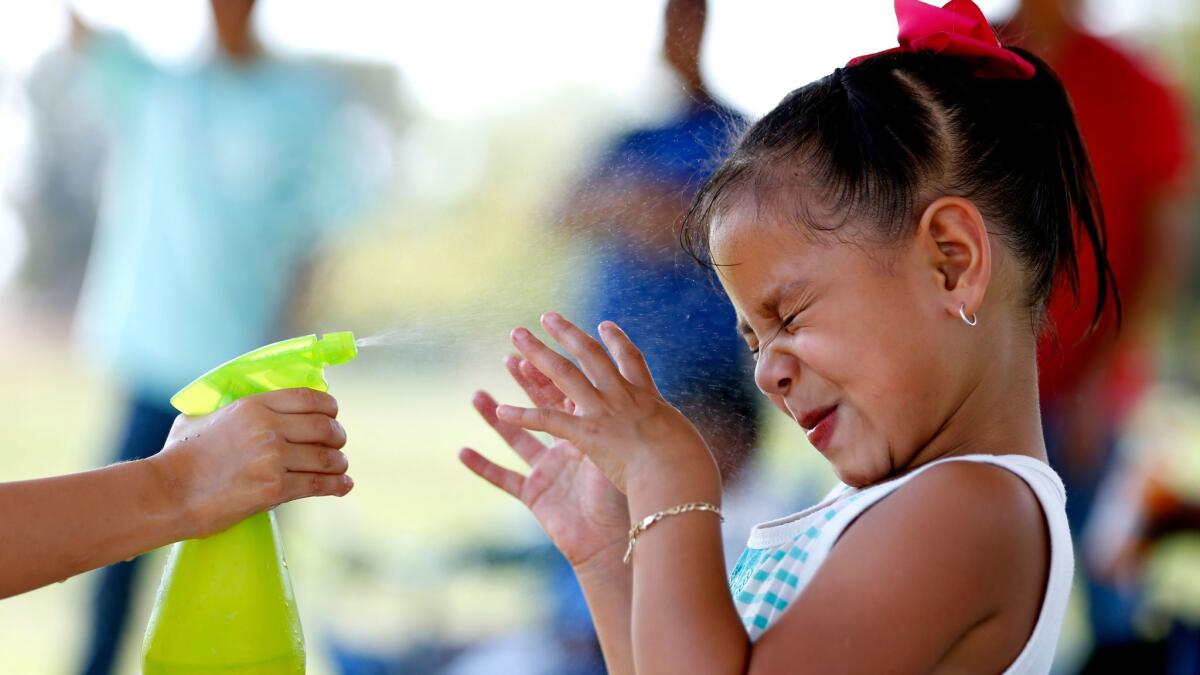
UPDATES:
11:35 a.m.: July 9: This story was updated with new information about Whittier and Winter fires.
11:05 a.m., July 9: This story was updated with new information about a Butte County fire.
9:25 a.m., July 9: This story was updated with new information about Whittier fire and DWP power outage.
7:30 a.m., July 9: This story updated with new burn numbers.
9:40 p.m., July 8: This article was updated with new information about DWP fire in Northridge.
This article was originally posted at 8:50 p.m.
More to Read
Sign up for Essential California
The most important California stories and recommendations in your inbox every morning.
You may occasionally receive promotional content from the Los Angeles Times.

